Last updated on April 23, 2024
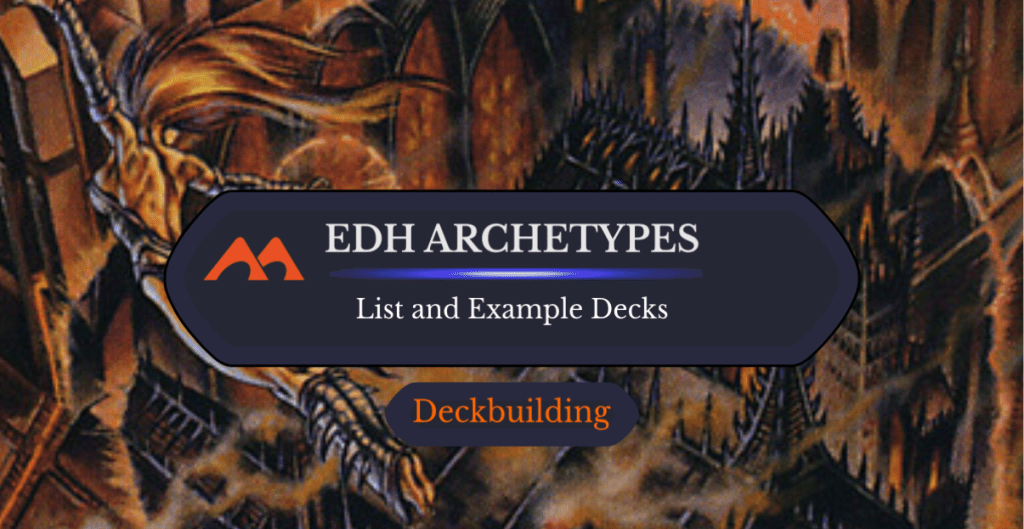
Warp World | Illustration by Ron Spencer
“Archetype” is a somewhat nebulous term in Magic. Most players understand what “control” or “aggro” means, but terms like “aristocrats,” “group slug,” and “superfriends” aren’t immediately obvious to newer players. Today I’m compiling a non-exhaustive list of some of the most popular archetypes for Commander, through these descriptors can be mixed and matched within the same decks.
Quick note: This isn’t a deckbuilding exercise or commentary on what’s optimal in Commander or not. The decklists are just here to highlight what kinds of cards you can expect in a given archetype. Plus, many of the decklists provided come from my own personal collection, and I only have so many Triomes and fetch lands, so cut me some slack.
Note: deck archetypes are numbered for clarity but not ranked.
#25. Ramp
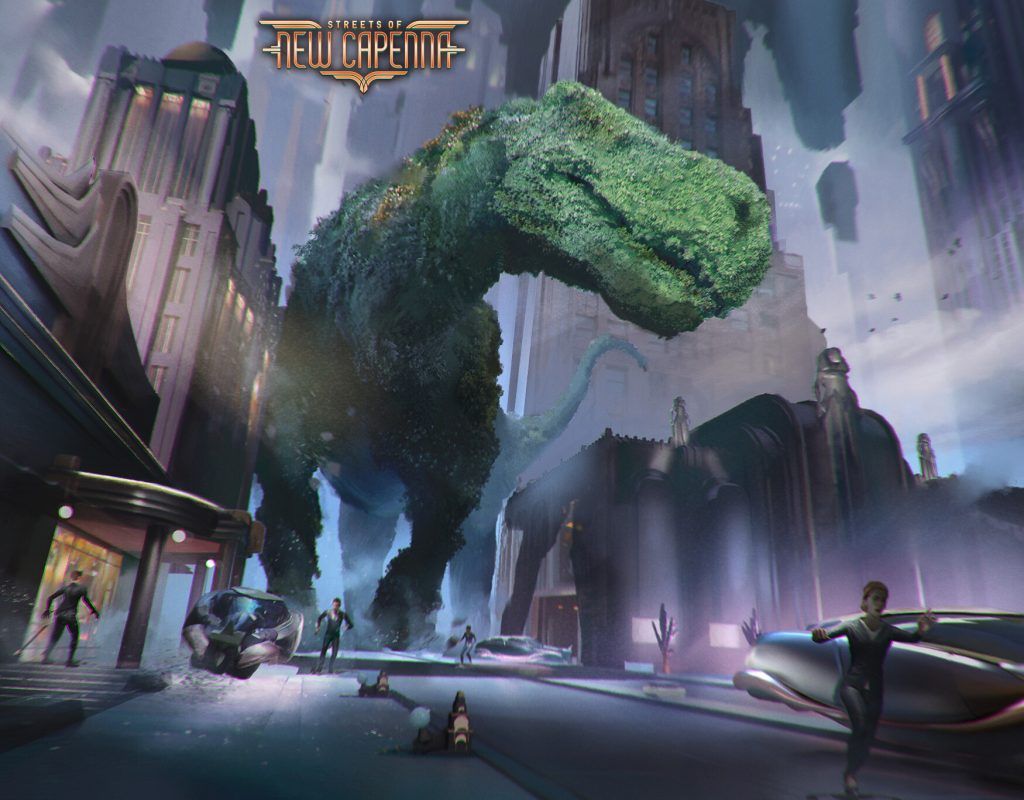
Topiary Stomper | Illustration by Robin Olausson
Commander (1)
Creature (40)
Ixalli's Lorekeeper
Dinosaur Egg
Drover of the Mighty
Itzquinth, Firstborn of Gishath
Marauding Raptor
Otepec Huntmaster
Atzocan Seer
Deathgorge Scavenger
Kinjalli's Sunwing
Ranging Raptors
Runic Armasaur
Sunfrill Imitator
Thrashing Brontodon
Topiary Stomper
Wayta, Trainer Prodigy
Wayward Swordtooth
Bronzebeak Foragers
Curious Altisaur
Majestic Heliopterus
Raging Regisaur
Ripjaw Raptor
Shifting Ceratops
Quartzwood Crasher
Raging Swordtooth
Regisaur Alpha
Scion of Calamity
Temple Altisaur
Wrathful Raptors
Xenagos, God of Revels
Bellowing Aegisaur
Earthshaker Dreadmaw
Etali, Primal Storm
Regal Behemoth
Rampaging Brontodon
Thundering Spineback
Verdant Sun's Avatar
Wakening Sun's Avatar
Zetalpa, Primal Dawn
Apex Altisaur
Zacama, Primal Calamity
Instant (4)
Path to Exile
Generous Gift
Akroma's Will
Return of the Wildspeaker
Sorcery (9)
Farseek
Rampant Growth
Thunderherd Migration
Cultivate
Savage Stomp
Fiery Confluence
Migration Path
Chandra's Ignition
Rishkar's Expertise
Enchantment (3)
Descendants' Path
Rhythm of the Wild
From the Rubble
Artifact (4)
Sol Ring
Arcane Signet
Lifecrafter's Bestiary
Progenitor's Icon
Land (39)
Arch of Orazca
Canopy Vista
Cinder Glade
Clifftop Retreat
Command Tower
Evolving Wilds
Exotic Orchard
Forest x8
Fortified Village
Furycalm Snarl
Game Trail
Jungle Shrine
Kessig Wolf Run
Mosswort Bridge
Mountain x4
Myriad Landscape
Path of Ancestry
Plains x4
Rogue's Passage
Secluded Courtyard
Temple of the False God
Terramorphic Expanse
Thriving Bluff
Thriving Grove
Thriving Heath
Unclaimed Territory
Starting off with some of the broader macro-archetypes, ramp decks look to accelerate mana in the first few turns and drop haymakers and finishers way ahead of schedule.
While most green decks run some number of Rampant Growth effects, ramp decks usually play a large quantity of mana dorks like Birds of Paradise to kick off as soon as possible. They often forego mid-game 4-drops and 5-drops to load up on early ramp spells and late-game closers.
What better way to highlight a ramp deck than with Magic’s very own Veloci-Ramp-Tor precon (their name, not mine)? It’s a dinosaur-themed deck, which means a large number of expensive creatures. The package of Rampant Growth, Farseek, and Migration Path is a clear indication of a dedicated ramp strategy.
#24. Aggro
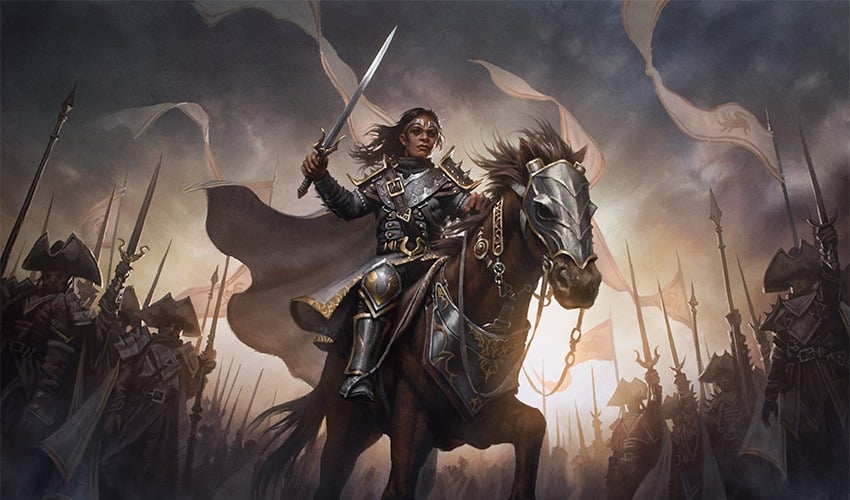
Adeline, Resplendent Cathar | Illustration by Bryan Sola
Commander (1)
Creature (45)
Cheeky House-Mouse
Dauntless Bodyguard
Esper Sentinel
Faerie Guidemother
Giant Killer
Giver of Runes
Hopeful Initiate
Isamaru, Hound of Konda
Recruitment Officer
Selfless Savior
Skrelv, Defector Mite
Skymarcher Aspirant
Thraben Inspector
Usher of the Fallen
Adanto Vanguard
Boareskyr Tollkeeper
Captain Eberhart
Cathar Commando
Clarion Spirit
Guardian of New Benalia
Intrepid Adversary
Luminarch Aspirant
Regal Bunnicorn
Seasoned Hallowblade
Sigardian Evangel
Sungold Sentinel
Thalia, Guardian of Thraben
Thalia's Lieutenant
Tithe Taker
Patchplate Resolute
Anointed Peacekeeper
Boromir, Warden of the Tower
Elite Spellbinder
Loran of the Third Path
Reidane, God of the Worthy
Sanguine Evangelist
Welcoming Vampire
Guardian of Faith
Ranger-Captain of Eos
Skyclave Apparition
Werefox Bodyguard
Benalish Marshal
Inquisitor Captain
Mothra, Supersonic Queen
Phyrexian Vindicator
Instant (11)
Gods Willing
Mana Tithe
Patriar's Humiliation
Surge of Salvation
Swords to Plowshares
Fateful Absence
Get Lost
Kabira Takedown
Reprieve
Sejiri Shelter
Teferi's Protection
Sorcery (2)
Enchantment (4)
Legion's Landing
Skrelv's Hive
Flowering of the White Tree
Wedding Announcement
Artifact (4)
Dusk Rose Reliquary
Arcane Signet
Reckoner Bankbuster
Oketra's Monument
Land (33)
Castle Ardenvale
Cave of the Frost Dragon
Eiganjo, Seat of the Empire
Minas Tirith
Shefet Dunes
Snow-Covered Plains x24
Cavern of Souls
Faceless Haven
Mishra's Foundry
Mutavault
Aggro is a macro-archetype that simply means you’re trying to kill your opponents with damage as quickly as possible. Whether you do that through combat or burn spells, you want to start attacking as soon as you can.
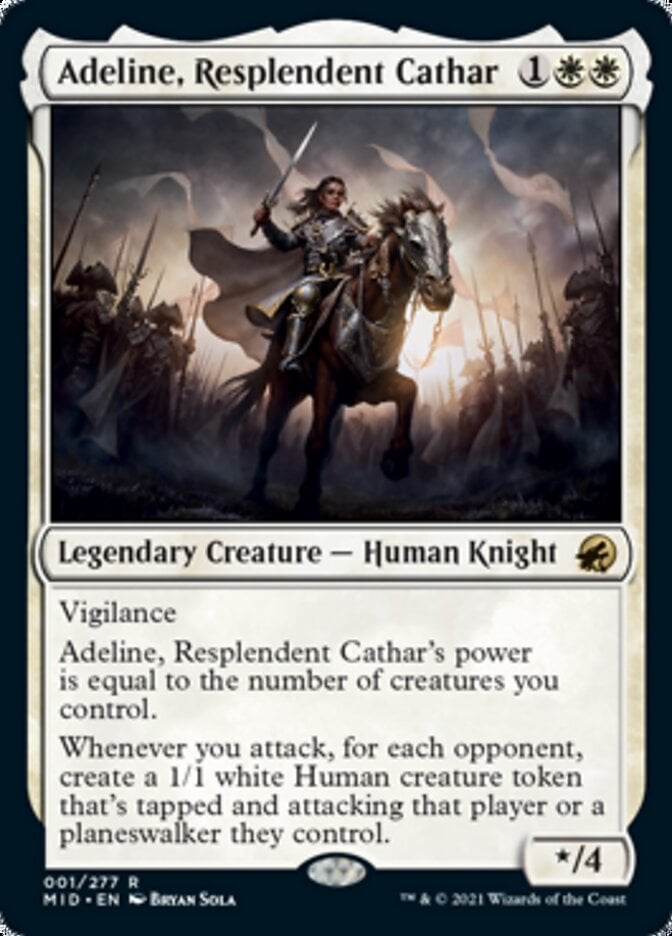
Aggro decks play to the board heavily and can be vulnerable to board wipes, so it’s important to play the most efficient threats you can at every point on the curve. The list provided is an Adeline, Resplendent Cathar deck that was developed for MTG Arena’s Brawl format, but it could easily be adapted to paper Commander with a few easy changes. You’ll notice the deck has an extremely high number of 1-drops and nothing that costs more than 4 mana since it’s trying to wrap up games way before the turns where expensive spells would matter.
#23. Control
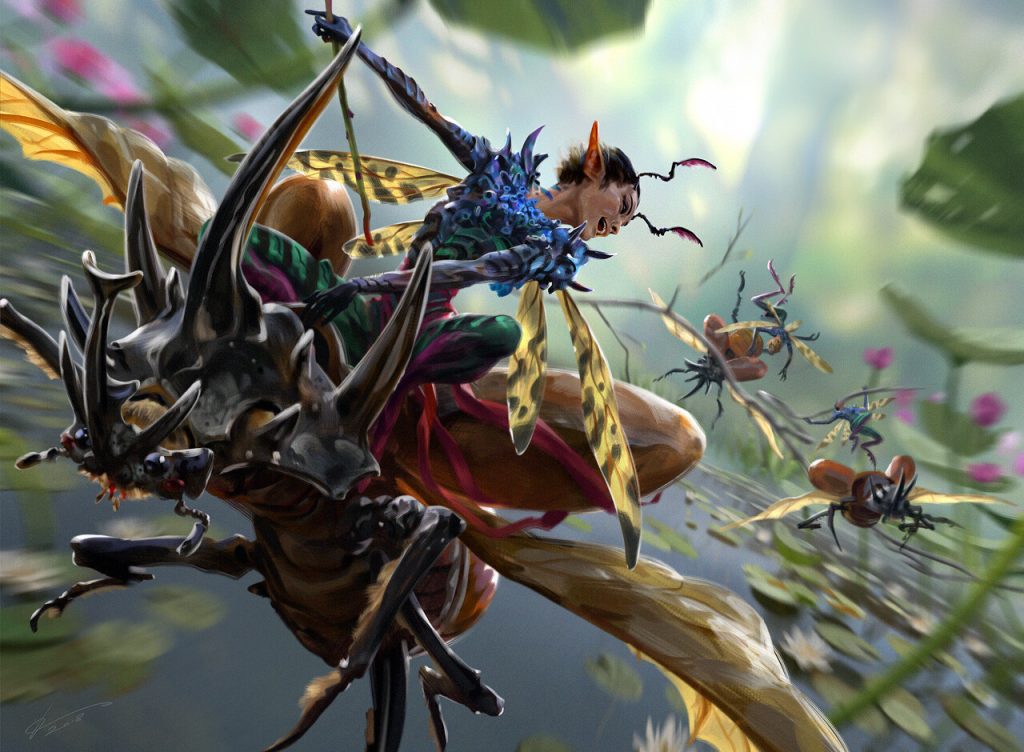
Nymris, Oona's Trickster | Illustration by Johannes Voss
Commander (1)
Battle (1)
Creature (26)
Academy Loremaster
Snapcaster Mage
Quickling
Blacklance Paragon
Cunning Nightbonder
Spectral Adversary
Wavebreak Hippocamp
Opposition Agent
Slitherwisp
Vendilion Clique
Tishana's Tidebinder
Brazen Borrower
Nimble Obstructionist
Ebondeath, Dracolich
Crafty Cutpurse
Notion Thief
Ulamog's Nullifier
Voracious Greatshark
Teferi, Mage of Zhalfir
Thryx, the Sudden Storm
Dream Eater
Lochmere Serpent
Callidus Assassin
Torrential Gearhulk
Hullbreaker Horror
Elder Deep-Fiend
Instant (25)
March of Swirling Mist
Mystical Tutor
Brainstorm
Consider
Dark Ritual
Drown in the Loch
Run Away Together
Cyclonic Rift
Mission Briefing
Narset's Reversal
Counterspell
Dimir Charm
Go for the Throat
Tainted Indulgence
Filter Out
Dihada's Ploy
Silundi Vision
Ancient Excavation
Deadly Rollick
Rewind
Mystical Teachings
Aetherspouts
Mystic Confluence
Nexus of Fate
Dig Through Time
Artifact (9)
Sol Ring
Scroll Rack
Arcane Signet
Dimir Signet
Talisman of Dominance
Sapphire Medallion
Thaumatic Compass
Fellwar Stone
Commander's Sphere
Land (37)
Exotic Orchard
Command Tower
Myriad Landscape
Evolving Wilds
Reliquary Tower
Temple of the False God
Otawara, Soaring City
Castle Vantress
Shipwreck Marsh
Jwar Isle Refuge
Clearwater Pathway
Darkwater Catacombs
Dimir Aqueduct
Temple of Deceit
Sunken Hollow
Restless Reef
Creeping Tar Pit
Sunken Ruins
Choked Estuary
Swamp x8
Island x10
Control is a reactive macro-archetype that wants to operate at instant speed and respond to what your opponents are doing. Control decks are usually much lighter on wincons and board presence, with more emphasis on interaction through counterspells, board wipes, and flash threats.
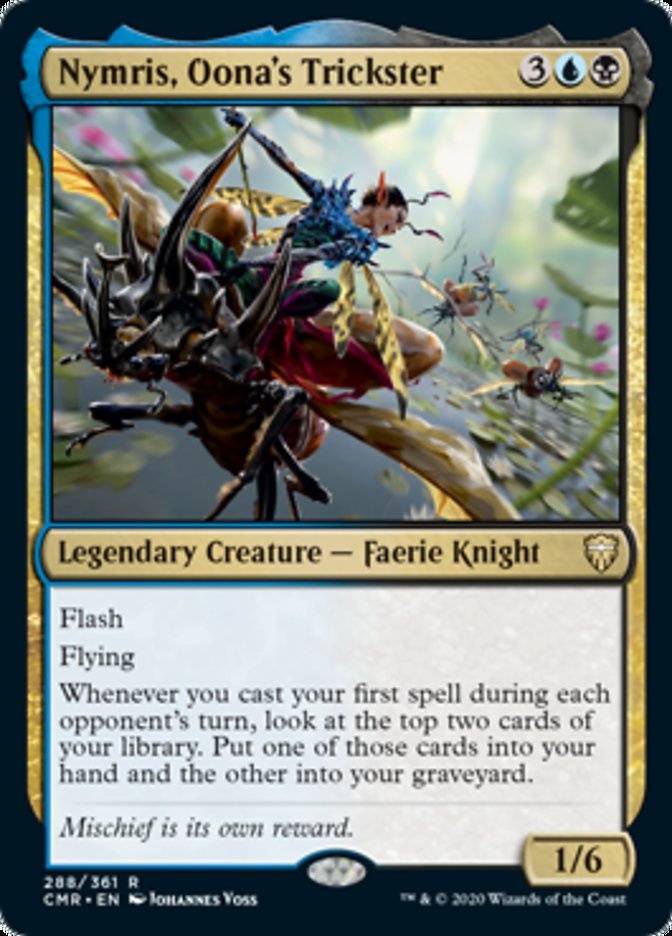
Control decks often have a combo element to them, biding time with interaction until the combo pieces can be assembled. This Nymris, Oona's Trickster decklist has a theme of casting spells during opponents’ turns, and it features almost exclusively instant-speed plays.
#22. Typal

The Ur-Dragon | Illustration by Jaime Jones
Commander (1)
Battle (1)
Planeswalker (3)
Sarkhan, Fireblood
Sivitri, Dragon Master
Sarkhan Unbroken
Creature (37)
Korlessa, Scale Singer
Sylvia Brightspear
Dragonborn Champion
Renari, Merchant of Marvels
Boneyard Scourge
Kyodai, Soul of Kamigawa
Nicol Bolas, the Ravager
Scion of the Ur-Dragon
Wasitora, Nekoru Queen
Glorybringer
Lozhan, Dragons' Legacy
Kolaghan, the Storm's Fury
Scourge of Valkas
Dragonlord Ojutai
Hellkite Courser
Scourge of the Throne
Dragonlord Kolaghan
Steel Hellkite
Savage Ventmaw
Khorvath Brightflame
Silumgar, the Drifting Death
Dragonlord Silumgar
Miirym, Sentinel Wyrm
Lathliss, Dragon Queen
Kokusho, the Evening Star
Dragonlord Dromoka
Sapphire Dragon
Skyline Despot
Drakuseth, Maw of Flames
Beledros Witherbloom
Bladewing the Risen
Tiamat
Atarka, World Render
Morophon, the Boundless
Bogarden Hellkite
Utvara Hellkite
Scion of Draco
Instant (3)
Goryo's Vengeance
Sarkhan's Triumph
Spit Flame
Sorcery (4)
Cultivate
Kodama's Reach
Patriarch's Bidding
Crux of Fate
Enchantment (5)
Dragon Tempest
Heartless Summoning
Rhythm of the Wild
The Elder Dragon War
Sneak Attack
Artifact (8)
Sol Ring
Arcane Signet
Orb of Dragonkind
Lightning Greaves
Carnelian Orb of Dragonkind
Herald's Horn
Dragon's Hoard
Commander's Sphere
Land (38)
Command Tower
Path of Ancestry
Ancient Ziggurat
Haven of the Spirit Dragon
Crucible of the Spirit Dragon
Mana Confluence
Temple of the Dragon Queen
Secluded Courtyard
Cavern of Souls
Unclaimed Territory
Reflecting Pool
Fabled Passage
Temple of the False God
Ash Barrens
Raugrin Triome
Jungle Shrine
Savage Lands
Bloodstained Mire
Wooded Foothills
Morphic Pool
Luxury Suite
Spire Garden
Bountiful Promenade
Sea of Clouds
Undergrowth Stadium
Sacred Foundry
Godless Shrine
Overgrown Tomb
Watery Grave
Temple Garden
Plains
Island
Forest x2
Mountain x2
Swamp x2
Typal decks reward you for biasing towards a single creature type. It’s one of the most popular Commander archetypes, especially with first-time deck-builders, with many of the most popular commanders in the game being typal payoffs.
Generic typal support pieces like Herald's Horn and Cavern of Souls are perfect for these decks, whether that be ninjas, zombies, elves, or something less popular like avatars and rebels. The decklist provided is a typical The Ur-Dragon build, with a mix of generic typal support and more specific dragons-matter cards.
#21. Tokens/Go-Wide
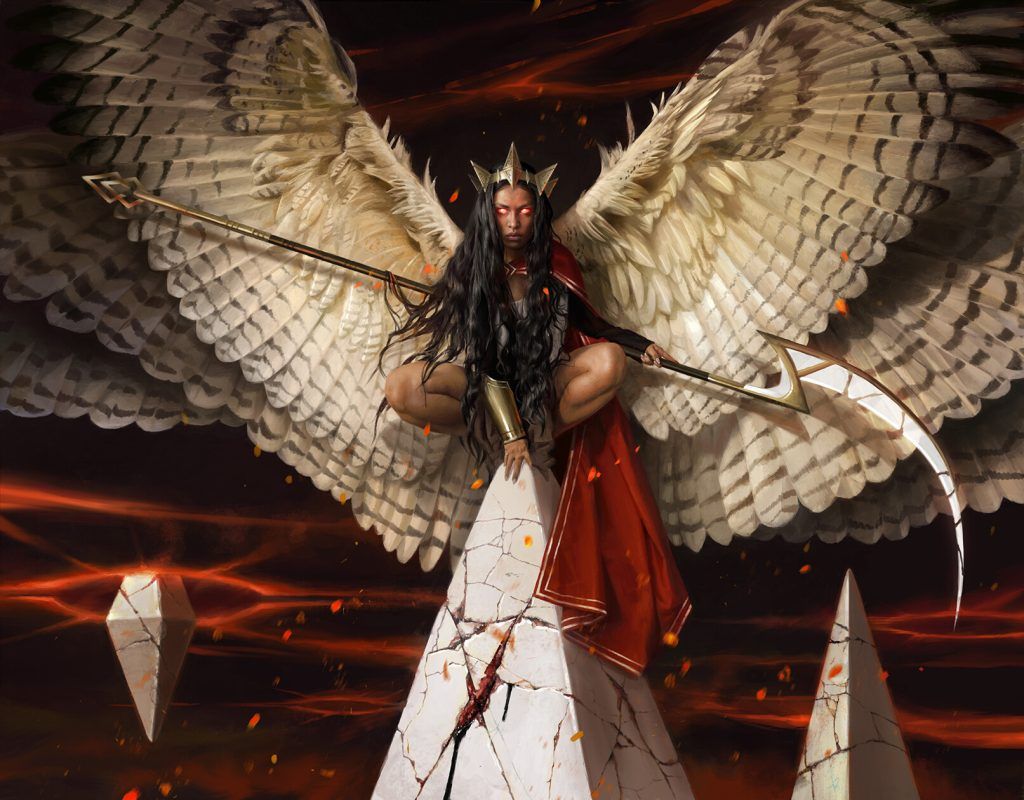
Kasla, the Broken Halo | Illustration by Martina Fackova
Commander (1)
Planeswalker (1)
Creature (28)
Cloud of Faeries
Goblin Instigator
Spirited Companion
Suture Priest
Tetsuko Umezawa, Fugitive
Banisher Priest
Chasm Skulker
Duergar Hedge-Mage
Goblin Medics
Mentor of the Meek
Mistmeadow Vanisher
Nadir Kraken
Saint Traft and Rem Karolus
Village Bell-Ringer
Wildfire Awakener
Angel of Finality
Emeria Angel
Fallowsage
Keeper of the Accord
Kykar, Wind's Fury
Nesting Dovehawk
Joyful Stormsculptor
Venerated Loxodon
Flockchaser Phantom
The Locust God
Seraph of the Masses
Angel of Salvation
Flight of Equenauts
Instant (10)
Secure the Wastes
Swords to Plowshares
Ephemeral Shields
Devouring Light
Wear / Tear
Meeting of Minds
Stoke the Flames
Artistic Refusal
Shatter the Source
Chant of Vitu-Ghazi
Sorcery (6)
Path of the Ghosthunter
Battle Screech
Temporal Cleansing
Migratory Route
Austere Command
Hour of Reckoning
Enchantment (4)
Impact Tremors
Improbably Alliance
Conclave Tribunal
Whirlwind of Thought
Artifact (9)
Skullclamp
Sol Ring
Arcane Signet
Fractured Powerstone
Commander's Sphere
Cultivator's Caravan
Wand of the Worldsoul
Ichor Elixir
Deluxe Dragster
Land (39)
Command Tower
Evolving Wilds
Exotic Orchard
Frostboil Snarl
Furycalm Snarl
Island x8
Kher Keep
Mountain x8
Mystic Monastery
Plains x8
Port Town
Prairie Stream
Rogue's Passage
Skycloud Expanse
Temple of Enlightenment
Temple of Epiphany
Temple of Triumph
Terramorphic Expanse
Go-wide decks want to flood the board with creatures and use Overrun or Impact Tremors style effects to turn an army of creatures into a victory. They don’t have to be token decks, but it’s hard to reach critical mass of creatures without doing some sort of token shenanigans.
These decks make cards like Parallel Lives and Mondrak, Glory Dominus staples in the format.
While go-wide strategies are usually associated with the color pair, I’ve linked to the Divine Convocation precon from March of the Machine Commander because it’s a cool spin on the archetype. Instead of trying to win with a Craterhoof Behemoth, it uses its token generators to fuel convoke spells, particularly instants that can be played when you’re technically tapped out to catch opponents off guard.
#20. Counters
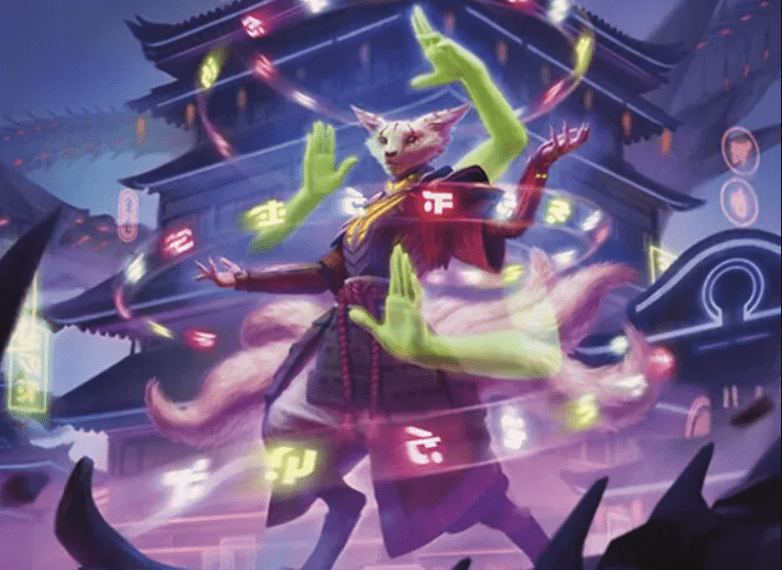
Bright-Palm, Soul Awakener | Illustration by Mila Pesic
Commander (1)
Creature (34)
Abzan Falconer
Biophagus
Champion of Lambholt
Conclave Mentor
Conclave Sledge-Captain
Death-Greeter's Champion
Dusk Legion Duelist
Elite Scaleguard
Esper Sentinel
Exocrine
Forgotten Ancient
Guardian Scalelord
Gwenna, Eyes of Gaea
Gyre Sage
Halana and Alena, Partners
Incubation Druid
Kalonian Hydra
Kodama of the West Tree
Krenko, Tin Street Kingpin
Lae'zel, Vlaakith's Champion
Leinore, Autumn Sovereign
Luminarch Aspirant
Managorger Hydra
Mawloc
Mirror-Style Master
Rishkar, Peema Renegade
Shalai and Hallar
Steelbane Hydra
Sunscorch Regent
The Red Terror
Tuskguard Captain
Tyrant Guard
Vorinclex, Monstrous Raider
Walking Balista
Instant (7)
Dromoka's Command
Generous Gift
Heroic Intervention
Inscription of Abundance
Inspiring Call
Silkguard
Swords to Plowshares
Sorcery (4)
Cultivate
Damning Verdict
Expand the Spheres
Kodama's Reach
Enchantment (9)
All Will Be One
Branching Evolution
Felidar Retreat
Hardened Scales
Invigorating Hot Spring
Jugan Defends the Temple / Remnant of the Rising Star
Ranger Class
Rhythm of the Wild
Together Forever
Artifact (7)
Arcane Signet
Commander's Sphere
Fellwar Stone
Ozolith, the Shattered Spire
Sol Ring
The Great Henge
The Ozolith
Land (38)
Arid Mesa
Bountiful Promenade
Canopy Vista
Cinder Glade
Command Tower
Exotic Orchard
Demolition Field
Fabled Passage
Forest x3
Gavony Township
Jetmir's Garden
Jungle Shrine
Karn's Bastion
Kessig Wolf Run
Krosan Verge
Llanowar Reborn
Mosswort Bridge
Mountain x3
Opal Palace
Oran-Rief, the Vastwood
Path of Ancestry
Plains x3
Prismatic Vista
Rogue's Passage
Sacred Foundry
Spectator Seating
Spire Garden
Stomping Ground
Temple Garden
Temple of the False God
Windswept Heath
Wooded Foothills
You can build a deck around just about any well-supported type of counter, whether that’s poison counters, charge counters, -1/-1 counters, and so on. The overwhelming majority of counter decks focus on +1/+1 counters, with an endless wave of support for the archetype.
There are tons of Hardened Scales and Branching Evolution force multipliers for +1/+1 counter decks, with new support pieces in just about every new Magic set. The decklist is an upgraded version of the Call for Backup precon, using the backup mechanic as a basis for a +1/+1 counter deck that’s trying to make enormous threats and kill opponents through sheer combat damage.
#19. Lifegain
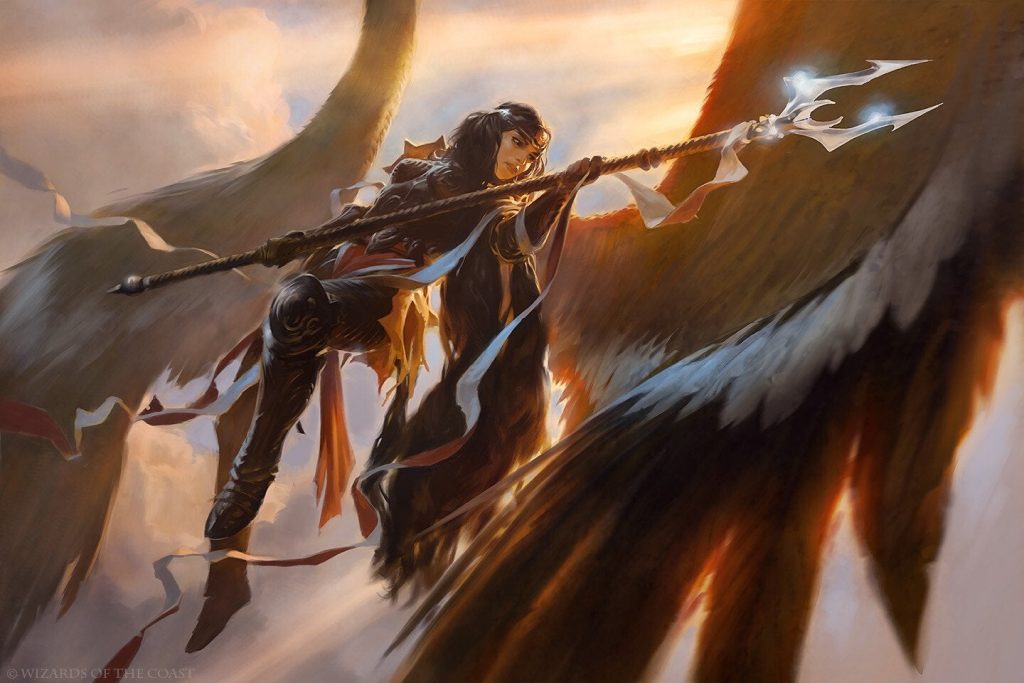
Liesa, Shroud of Dusk | Illustration by Slawomir Maniak
Commander (1)
Creature (26)
Archangel of Thune
Archivist of Oghma
Athreos, God of Passage
Auriok Champion
Burnished Hart
Celestine, the Living Saint
Dauthi Voidwalker
Felidar Sovereign
Giada, Font of Hope
Gray Merchant of Asphodel
Great Unclean One
Kambal, Consul of Allocation
Lion Sash
Rhox Faithmender
Righteous Valkyrie
Serra's Emissary
Sheoldred, the Apocalypse
Solemn Simulacrum
Sun Titan
Sunscorch Regent
Suture Priest
Tymna the Weaver
Valkyrie Harbinger
Vito, Thorn of the Dusk Rose
Vizkopa Guildmage
Witch of the Moors
Instant (7)
Crush Contraband
Despark
Flawless Maneuver
Return to Dust
Surge of Salvation
Swords to Plowshares
Szat's Will
Sorcery (9)
Austere Command
Blot Out the Sky
Deadly Tempest
Debt to the Deathless
Farewell
Fumigate
Revival / Revenge
Unburial Rites
Yawgmoth's Vile Offering
Enchantment (17)
Ashes of the Abhorrent
Aura of Silence
Authority of the Consuls
Blind Obedience
Cleric Class
Dawn of Hope
Ethereal Absolution
Exquisite Blood
Firja's Retribution
Ghostly Prison
Painful Quandary
Phyrexian Arena
Polluted Bonds
Rampage of the Valkyries
Sanguine Bond
Smothering Tithe
Sphere of Safety
Artifact (4)
Arcane Signet
Norn's Annex
Sol Ring
Well of Lost Dreams
Land (36)
Bojuka Bog
Cabal Coffers
Castle Locthwain
Caves of Koilos
Command Beacon
Command Tower
Fabled Passage
Fetid Heath
Godless Shrine
High Market
Isolated Chapel
Memorial to Folly
Myriad Landscape
Orzhov Basilica
Path of Ancestry
Plains x6
Reliquary Tower
Seraph Sanctuary
Shattered Sanctum
Shineshadow Snarl
Shizo, Death's Storehouse
Silent Clearing
Swamp x4
Temple of Silence
Temple of the False God
Urborg, Tomb of Yawgmoth
Vault of Champions
Vault of the Archangel
As the name suggests, lifegain decks want to increase their life total and trigger lifegain payoffs like Sanguine Bond or Dawn of Hope. They’re naturally harder to kill due to their artificially higher life total, and they often feature one-shot wincons like Aetherflux Reservoir and Felidar Sovereign.
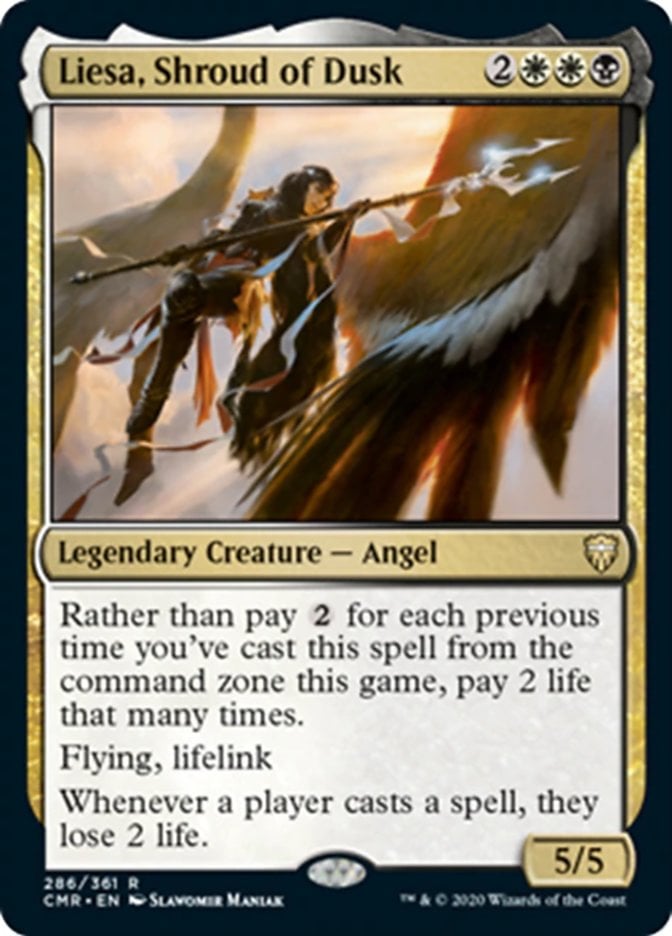
The list here comes from user Gangus on Moxfield and uses lifegain effects to counteract the life loss effects on Liesa, Shroud of Dusk. The deck also features a small angel-typal package and several other punisher-style effects that amplify Liesa’s damage output, making sure it’s always ahead on the damage race.
#18. Superfriends
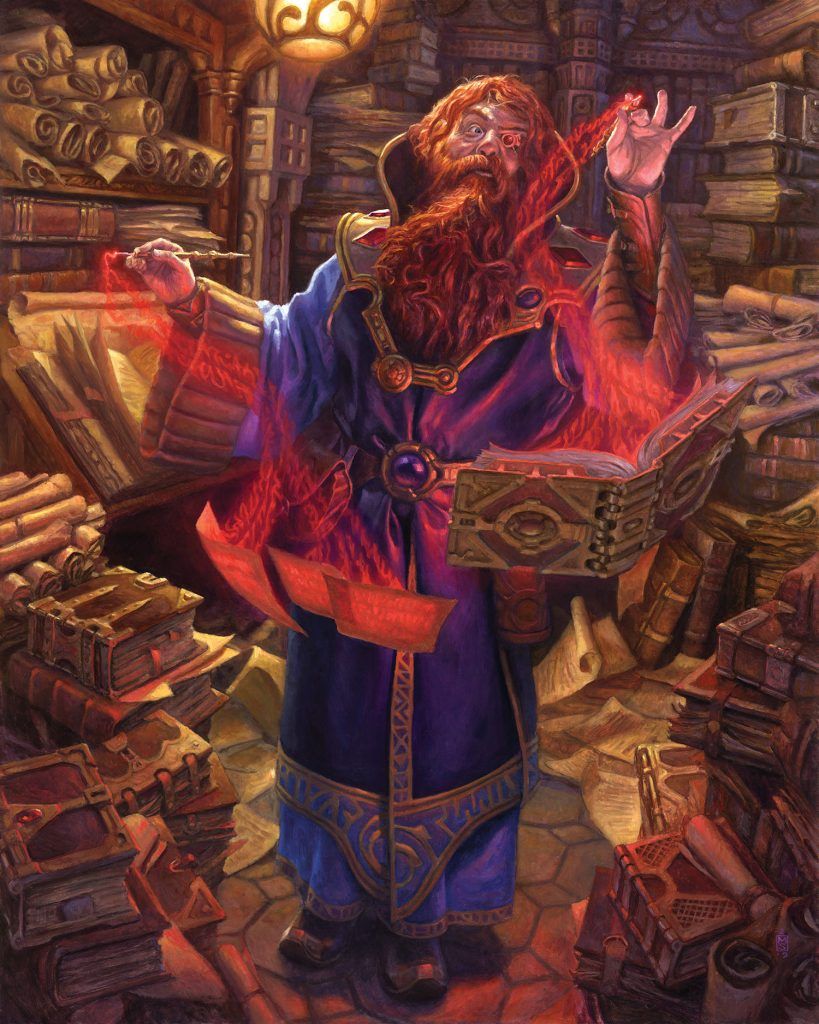
Commodore Guff | Illustration by Matt Stewart
Commander (1)
Planeswalker (17)
Ajani Steadfast
Chandra, Awakened Inferno
Chandra, Legacy of Fire
Chandra, Torch of Defiance
Elspeth, Sun's Champion
Gideon Jura
Jace Beleren
Jace, Architect of Thought
Jace, Mirror Mage
Nahiri, the Harbinger
Narset of the Ancient Way
Narset, Parter of Veils
Saheeli, Sublime Artificer
Sarkhan the Masterless
Teyo, Geometric Tactician
The Wanderer
Vronos, Masked Inquisitor
Creature (17)
Cartographer's Hawk
Deepglow Skate
Flux Channeler
Fog Bank
Grateful Apparition
Jaya's Phoenix
Kazuul, Tyrant of the Cliffs
Leori, Sparktouched Hunter
Mangara, the Diplomat
Narset, Enlightened Master
Onakke Oathkeeper
Oreskos Explorer
Silent Arbiter
Spark Double
Sparkshaper Visionary
Thrummingbird
Wall of Denial
Instant (5)
Guff Rewrites History
Path to Exile
Semester's End
Swords to Plowshares
Repeated Reverberation
Sorcery (4)
Blasphemous Act
Deploy the Gatewatch
Promise of Loyalty
Urza's Ruinous Blast
Enchantment (3)
Oath of Gideon
Oath of Jace
Oath of Teferi
Artifact (15)
Arcane Signet
Azorius Signet
Boros Signet
Fellwar Stone
Gatewatch Beacon
Honor-Worn Shaku
Izzet Signet
Nevinyrral's Disk
Norn's Annex
Sol Ring
Talisman of Conviction
Talisman of Creativity
Talisman of Progress
The Chain Veil
Wayfarer's Bauble
Land (38)
Cascade Bluffs
Command Tower
Exotic Orchard
Forge of Heroes
Frostboil Snarl
Furycalm Snarl
Interplanar Beacon
Island x7
Karn's Bastion
Mobilized District
Mountain x4
Myriad Landscape
Mystic Gate
Mystic Monastery
Plains x7
Port Town
Prairie Stream
Reliquary Tower
Rugged Prairie
Skycloud Expanse
Temple of Enlightenment
Temple of Epiphany
Temple of Triumph
Superfriends is shorthand for “planeswalkers matter.” These have a bit of a stigma against them since they can take long, complicated turns and often extend the length of games due to players attacking planeswalkers instead of players. They also frequently load up on board wipes as a means to keep creatures from threatening their ‘walkers.
Magic released its first superfriends deck with the Planeswalker Party precon as part of the Commander Masters line-up. Whereas the average Commander deck probably runs 0-2 planeswalkers, this precon jammed in just shy of 20, with plenty of ways to protect them and get extra loyalty activations.
#17. Recursion/Graveyard
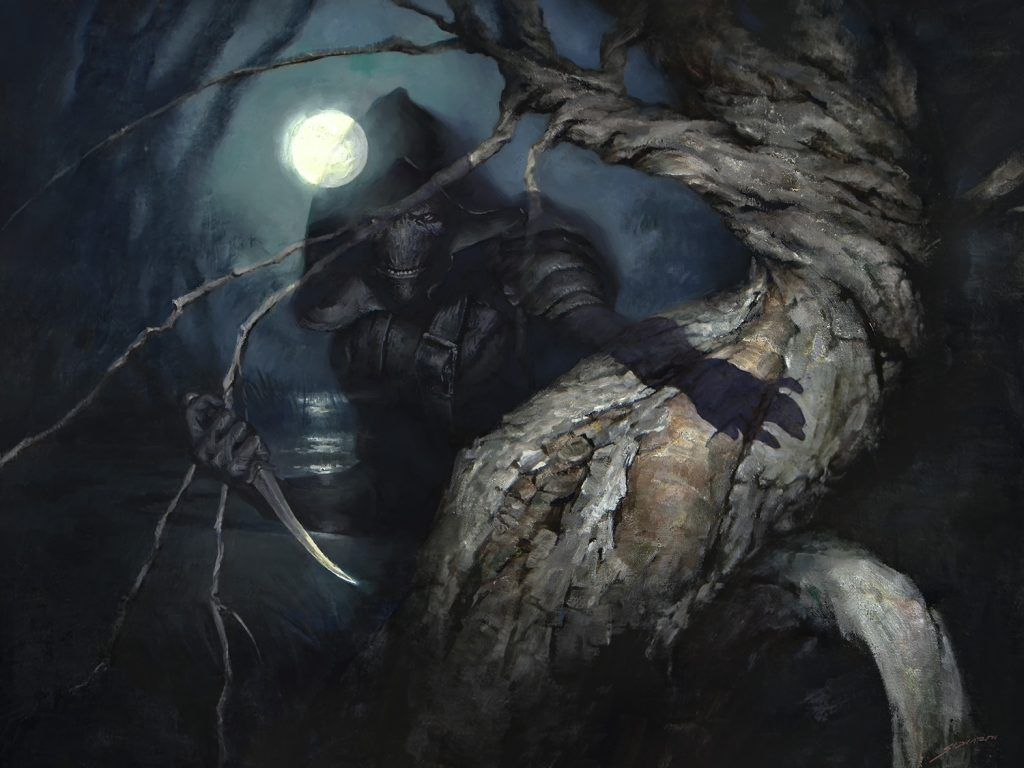
Dauthi Voidwalker | Illustration by Sidharth Chaturvedi
Commander (1)
Planeswalker (1)
Creature (25)
Ancient Brass Dragon
Bellowing Mauler
Burning-Rune Demon
Dauthi Voidwalker
Erinis, Gloom Stalker
Eternal Witness
Gravebreaker Lamia
Gray Merchant of Asphodel
Junji, the Midnight Sky
Keen Duelist
Kokusho, the Evening Star
Nyx Weaver
Oriq Loremage
Ramunap Excavaor
Reclamation Sage
Sakura-Tribe Elder
Sheoldred, Whispering One
Shigeki, Jukai Visionary
Shriekmaw
Sivriss, Nightmare Speaker
Skull Prophet
Stitcher's Supplier
Syr Konrad, the Grim
Tormod, the Desecrator
Underrealm Lich
Instant (12)
Abrupt Decay
Assassin's Trophy
Beast Within
Deadly Rollick
Force of Vigor
Grapple with the Past
Heroic Intervention
Infernal Grasp
Nature's Claim
Return to Nature
Rushed Rebirth
Tear Asunder
Sorcery (13)
Bala Ged Recovery
Cultivate
Damnation
Exsanguinate
Incarnation Technique
Living Death
Rampant Growth
Reanimate
Torment of Hailfire
Toxic Deluge
Unearth
Unmarked Grave
Victimize
Enchantment (9)
Animate Dead
Exploration
Family's Favor
Guardian Project
Heartless Summoning
Nature's Will
Phyrexian Arena
Sylvan Library
The Mending of Dominaria
Artifact (5)
Arcane Signet
Elixir of Immortality
Mind Stone
Sol Ring
Swiftfoot Boots
Land (34)
Arcane Lighthouse
Bojuka Bog
Cabal Coffers
Castle Locthwain
Command Tower
Darkbore Pathway
Deathcap Glade
Forest x6
Golgari Rot Farm
Llanowar Wastes
Nurturing Peatland
Overgrown Tomb
Swamp x8
Tainted Wood
Takenuma, Abandoned Mire
Temple of the False God
Twilight Mire
Undergrowth Stadium
Urborg, Tomb of Yawgmoth
Verdant Catacombs
Woodland Cemetery
Yavimaya, Cradle of Growth
This is a huge category that could honestly be broken down a bit more into sub-archetypes like reanimator, self-mill, and small-ball recursion decks. Regardless of the specific strategy, graveyard-centric decks want to put as many cards in their graveyard as possible, treating it like a second hand of cards. Some of the most broken plays in Magic involve using the graveyard as a resource, and most decks naturally have some sort of recursive element to them.
This decklist comes from Mulciber113 on Archidekt and combines elements of reanimator, self-mill, and recursion packages to form a multi-faceted deck that can tailor its gameplan to whatever’s happening in the current game. “Graveyard Shenanigans” seems like an appropriate title for this entire category of archetypes.
#16. Landfall

Tatyova, Steward of Tides | Illustration by Howard Lyon
Commander (1)
Planeswalker (2)
Nissa, Vital Force
Wrenn and Seven
Battle (1)
Creature (26)
Ancient Greenwarden
Ashaya, Soul of the Wild
Azusa, Lost but Seeking
Blossoming Tortoise
Coiling Oracle
Colossal Skyturtle
Elvish Reclaimer
Embodiment of Insight
Erinis, Gloom Stalker
Eternal Witness
Jolrael, Voice of Zhalfir
Kamahl, Heart of Krosa
Kodama of the East Tree
Kura, the Boundless Sky
Llanowar Loamspeaker
Mystic Snake
Nissa, Vastwood Seer
Oracle of Mul Daya
Ramunap Excavator
Sakura-Tribe Elder
Shigeki, Jukai Visionary
Slogurk, the Overslime
Sylvan Advocate
Thrasios, Triton Hero
Titania, Protector of Argoth
Yedora, Grave Gardener
Instant (8)
Awakening of Vitu-Ghazi
Beast Within
Harrow
Heroic Intervention
Joint Exploration
Kamahl's Will
Ride the Avalanche
Voidslime
Sorcery (16)
Coastal Breach
Consuming Tide
Crush of Tentacles
Devastation Tide
Emergent Sequence
Life from the Loam
Nylea's Intervention
Part the Waterveil
Pir's Whim
Praetor's Consul
Skyshroud Claim
Splendid Reclamation
Sylvan Awakening
Urban Evolution
Venture Forth
Wave of Vitriol
Enchantment (4)
Druid Class
Retreat to Coralhelm
Roaring Earth
Wilderness Reclamation
Artifact (2)
Land (40)
Blighted Woodland
Command Tower
Crawling Barrens
Darksteel Citadel
Evolving Wilds
Faerie Conclave
Field of the Dead
Forest x12
Hall of the Storm Giants
Island x8
Lair of the Hydra
Littjara Mirrorlake
Lumbering Falls
Myriad Landscape
Otawara, Soaring City
Restless Vinestalk
Simic Growth Chamber
Tanglepool Bridge
Temple of Mystery
Terramorphic Expanse
Tolaria West
Treetop Village
“Landfall” is used as a way of identifying any lands-matter deck. They don’t necessarily rely on landfall permanents, but they all share the goal of using lands beyond just tapping for mana. Whether that’s fueling Scute Swarm or creating a card-draw engine with The Gitrog Monster, landfall decks feature more utility lands than the average deck.
This Moxfield deck by GilderBairn takes a more controlling approach to a lands-matter deck with asymmetrical board wipes that don’t bounce creature lands. You’ll also notice a slightly higher land count than normal, and more emphasis on land-based ramp than artifact-based ramp, which are both common features of lands decks.
#15. Aristocrats/Sacrifice
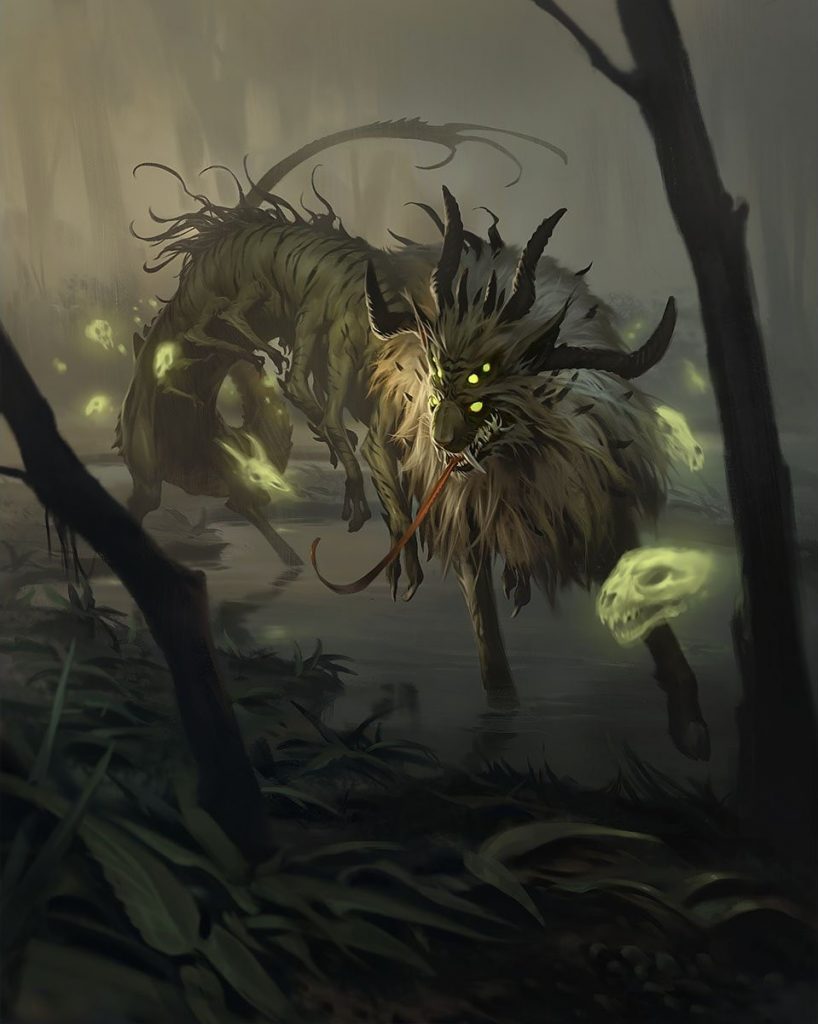
Nethroi, Apex of Death | Illustration by Slawomir Maniak
Commander (1)
Planeswalker (2)
Tevesh Szat, Doom of Fools
Liliana, Dreadhorde General
Creature (32)
Haywire Mite
Carrion Feeder
Viscera Seer
Elas il-Kor, Sadistic Pilgrim
Bartolomé del Presidio
Jadar, Ghoulcaller of Nephalia
Blood Artist
Reassembling Skeleton
Vraan, Executioner Thane
Priest of Forgotten Gods
Viridian Emissary
Cruel Celebrant
Sakura-Tribe Elder
Bloodghast
Zulaport Cutthroat
Morbid Opportunist
Woe Strider
Pawn of Ulamog
Yahenni, Undying Partisan
Fleshbag Marauder
Lurrus of the Dream-Den
Wood Elves
Ophiomancer
Solemn Simulacrum
Poison-Tip Archer
Sanguinary Priest
Yawgmoth, Thran Physician
Meren of Clan Nel Toth
Krav, the Unredeemed
Syr Konrad, the Grim
Regna, the Redeemer
Protean Hulk
Instant (6)
Malakir Rebirth
Fanatical Offering
Plump the Forbidden
Saw in Half
Wretched Confluence
Szat's Will
Sorcery (7)
Pest Infestation
Diabolic Intent
Damn
Primal Growth
Blood for Bones
Ghouls' Night Out
Eerie Ultimatum
Enchantment (8)
Vampiric Rites
Ghoulish Procession
Dreadhorde Invasion
Hidden Stockpile
Bitterblossom
Blight Mound
Bastion of Remembrance
Journey to Eternity
Artifact (7)
Sol Ring
Skullclamp
Arcane Signet
Golgari Signet
Norn's Wellspring
Commander's Sphere
Bolas's Citadel
Land (37)
Murmuring Bosk
Indatha Triome
Sandsteppe Citadel
Command Tower
Exotic Orchard
Path of Ancestry
Terramorphic Expanse
Evolving Wilds
Myriad Landscape
Ash Barrens
Westvale Abbey
High Market
Grim Backwoods
Krosan Verge
Sunpetal Grove
Windswept Heath
Canopy Vista
Temple Garden
Temple of Silence
Marsh Flats
Shambling Vent
Nurturing Peatland
Verdant Catacombs
Twilight Mire
Deathcap Glade
Overgrown Tomb
Brightclimb Pathway
Necroblossom Snarl
Phyrexian Tower
Forest x3
Plains x2
Swamp x3
Players usually refer to creature sacrifice decks as “aristocrats” decks, a moniker coined by Sam Black, who piloted a well-known sacrifice-themed deck centered around Falkenrath Aristocrat and Cartel Aristocrat.
These decks usually feature three key elements: sacrifice outlets, sacrifice fodder, and sacrifice payoffs in the form of death triggers. It’s the best home for Blood Artist and friends, and sometimes features combo loops as part of its strategy. The Nethroi, Apex of Death deck is full of redundant pieces in each of the main categories.
#14. Voltron

Geist of Saint Traft | Illustration by Igor Kieryluk
Commander (1)
Creature (24)
Selfless Spirit
Stenn, Paranoid Partisan
Stoneforge Mystic
Lion Sash
Stone Haven Outfitter
Puresteel Paladin
Leonin Shikari
Relic Seeker
The Reality Chip
Sram, Senior Edificer
Tameshi, Reality Architect
Etched Champion
Cloudsteel Kirin
Ardenn, Intrepid Archeologist
Trophy Mage
Armored Skyhunter
Balan, Wandering Knight
Halvar, God of Battle
Padeem, Consul of Innovation
Danitha, Benalia's Hope
Stonehewer Giant
Ayesha Tanaka, Armorer
Sun Titan
Heavenly Blademaster
Instant (7)
Enlightened Tutor
Slip Out the Back
Swords to Plowshares
Stubborn Denial
Counterspell
Change of Plans
Teferi's Protection
Sorcery (4)
Steelshaper's Gift
Open the Armory
Slash the Ranks
Single Combat
Enchantment (1)
Artifact (25)
Sol Ring
Shadowspear
Masterwork of Ingenuity
Commander's Plate
Lightning Greaves
Conqueror's Flail
Arcane Signet
Robe of Stars
Blackblade Reforged
Mask of Memory
Azorius Signet
Swiftfoot Boots
Sword of the Animist
Umezawa's Jitte
Sword of Body and Mind
Sword of Light and Shadow
Sword of Feast and Famine
Sword of Fire and Ice
Maul of the Skyclaves
Sword of Vengeance
Andúril, Flame of the West
Hammer of Nazahn
Hexgold Hoverwings
Batterskull
Argentum Armor
Land (38)
Command Tower
Myriad Landscape
Mistveil Plains
Rogue's Passage
Temple of the False God
Inventors' Fair
Celestial Colonnade
Prairie Stream
Azorius Chancery
Sea of Clouds
Irrigated Farmland
Adarkar Wastes
Mistgate Pathway
Temple of Enlightenment
Port Town
Glacial Fortress
Hallowed Fountain
Deserted Beach
Island x8
Plains x12
A Voltron strategy focuses all its attention on building up one unstoppable threat and having that be your main wincon. Voltron strategies often rely on hexproof or indestructible creatures to ward off interaction, and they use equipment, auras, and/or +1/+1 counters to enhance that threat. These decks can be soft to certain kinds of removal and often draw the attention of opponents since they often play the role of the aggressor.
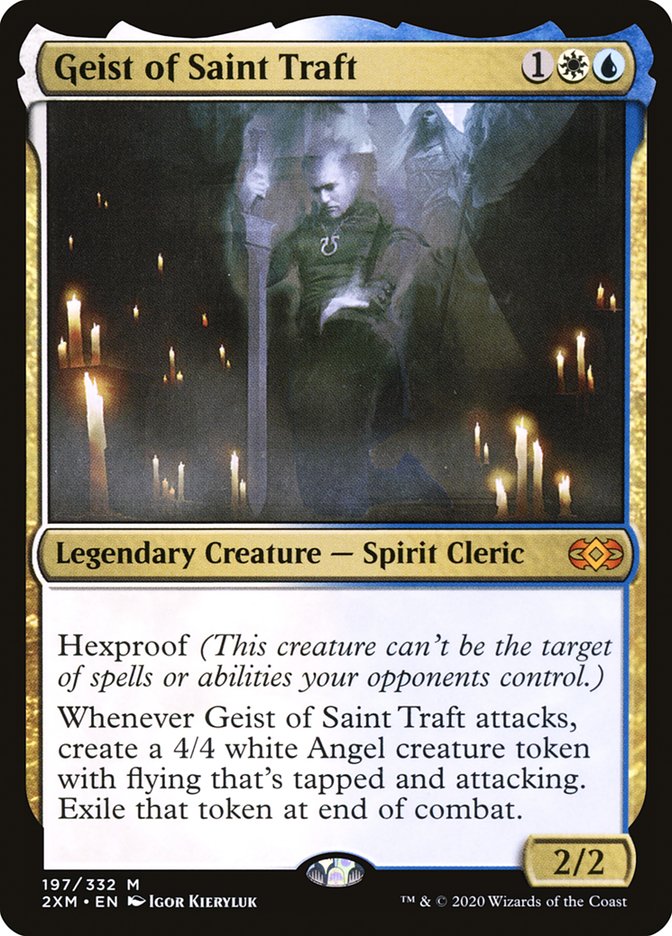
The decklist provided uses Geist of Saint Traft as a reliable early-game hexproof threat that piles on damage with a toolbox of equipment for different situations.
#13. Group Hug
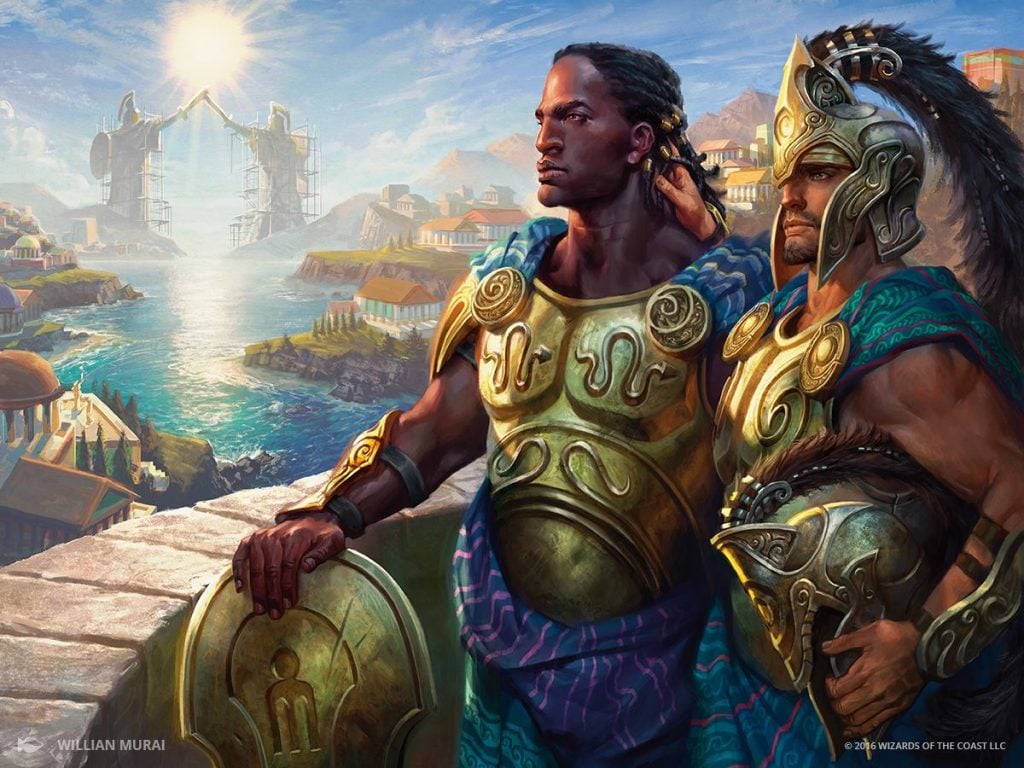
Kynaios and Tiro of Meletis | Illustration by Willian Murai
Commander (1)
Creature (22)
Veteran Explorer
Humble Defector
Hushwing Gryff
Chasm Skulker
Gwafa Hazid, Profiteer
Selvala, Explorer Returned
Edric, Spymaster of Trest
Ludevic, Necro-Alchemist
Orzhov Advokist
Akroan Horse
Selfless Squire
Sidar Kondo of Jamuraa
Windborn Muse
Horizon Chimera
Zedruu the Greathearted
Kraum, Ludevic's Opus
Psychosis Crawler
Kazuul, Tyrant of the Cliffs
Realm Seekers
Rubblehulk
Progenitor Mimic
Blazing Archon
Instant (9)
Swords to Plowshares
Swan Song
Arcane Denial
Benefactor's Draught
Oblation
Beast Within
Entrapment Maneuver
Reins of Power
Sylvan Reclamation
Sorcery (11)
Minds Aglow
Collective Voyage
Cultivate
Kodama's Reach
Tempt with Discovery
Migratory Route
Wave of Reckoning
Seeds of Renewal
Treacherous Terrain
Reverse the Sands
Blasphemous Act
Enchantment (8)
Evolutionary Escalation
Oath of Druids
Ghostly Prison
Propaganda
Rites of Flourishing
Sphere of Safety
Lurking Predators
Hoofprints of the Stag
Artifact (9)
Sol Ring
Empyrial Plate
Howling Mine
Commander's Sphere
Temple Bell
Assault Suit
Prismatic Geoscope
Venser's Journal
Keening Stone
Land (40)
Azorius Chancery
Ash Barrens
Command Tower
Evolving Wilds
Exotic Orchard
Forbidden Orchard
Frontier Bivouac
Gruul Turf
Homeward Path
Izzet Boilerworks
Jungle Shrine
Krosan Verge
Myriad Landscape
Mystic Monastery
Opal Palace
Rupture Spire
Seaside Citadel
Selesnya Sanctuary
Terramorphic Expanse
Transguild Promenade
Plains x5
Island x5
Mountain x5
Forest x5
Group Hug players just want everyone to have a good time. This strategy includes cards and effects that benefit multiple players. Howling Mine effects are a hallmark of group hug decks, though most of these decks also feature ways to punish players.
It’s the perfect political strategy for Commander, since you usually have more to offer other players in exchange for a reprieve from attacks or removal. It’s best to have control over your group hug cards though. If you just play completely universal effects that benefit everyone equally, the player with the strongest deck is often going to come out on top.
Though severely outdated, 2018’s Stalwart Unity precon is exactly what a typical group hug deck looks like, full of cards like Veteran Explorer and Humble Defector, but also sneaking in wincons like Psychosis Crawler and Keening Stone (severely outdated). To this day, Kynaios and Tiro of Meletis remains one of the most balanced and definitive group hug commanders.
#12. Group Slug

Mogis, God of Slaughter | Illustration by Peter Mohrbacher
Commander (1)
Planeswalker (4)
Daretti, Scrap Savant
Chandra, Torch of Defiance
Chandra, Awakened Inferno
Daretti, Ingenious Iconoclast
Creature (6)
Rug of Smothering
Kederekt Parasite
Rampaging Ferocidon
Magus of the Moon
Solphim, Mayhem Dominus
Erebos, God of the Dead
Instant (7)
Rakdos Charm
Soul Shatter
Tibalt's Trickery
Valakut Awakening
Malakir Rebirth
Pyroblast
Vampiric Tutor
Sorcery (18)
Wildfire
Boom / Bust
Night's Whisper
Disrupt Decorum
Obliterate
Decree of Annihilation
Blasphemous Act
Tectonic Break
Brotherhood's End
Dreadbore
Gamble
Vandalblast
Jokulhaups
Shatterskull Smashing
Ruination
Agadeem's Awakening
Damnation
Toxic Deluge
Enchantment (15)
Sulfuric Vortex
Underworld Dreams
Impending Disaster
Manabarbs
Death Pits of Rath
Smoke
City on Fire
Spellshock
Lethal Vapors
Tainted Aether
Furnace of Rath
Price of Glory
Blood Moon
Fiery Emancipation
Polluted Bonds
Artifact (16)
Mind Stone
Fellwar Stone
Arcane Signet
Rakdos Signet
Planar Atlas
Sol Ring
Realmbreaker, the Invasion Tree
Gilded Lotus
Thought Vessel
Crawlspace
Talisman of Indulgence
Caltrops
Thran Dynamo
Ankh of Mishra
Ensnaring Bridge
Crucible of Worlds
Land (33)
Drownyard Temple
Drossforge Bridge
Command Tower
Bojuka Bog
Darksteel Citadel
Dragonskull Summit
Fabled Passage
Takenuma, Abandoned Mire
Luxury Suite
Haunted Ridge
Blood Crypt
Prismatic Vista
Mountain x11
Swamp x9
Bloodstained Mire
Group Slug players just want everyone to have a bad time. The antithesis of group hug, group slug players seek pain. This strategy attacks players’ resources, which often includes the group slug player themselves. Sulfuric Vortex and Painful Quandary are examples of group slug cards that sap players of their resources, whether that’s life, board presence, or cards in hand.
I’ve pulled a Group Slug decklist from fellow Draftsim writer A.L. Walser that exemplifies this playstyle perfectly. The commander’s mean, the cards are mean, and the entire premise of the deck is making sure players are dying, even if that means taking damage from your own cards.
#11. Chaos
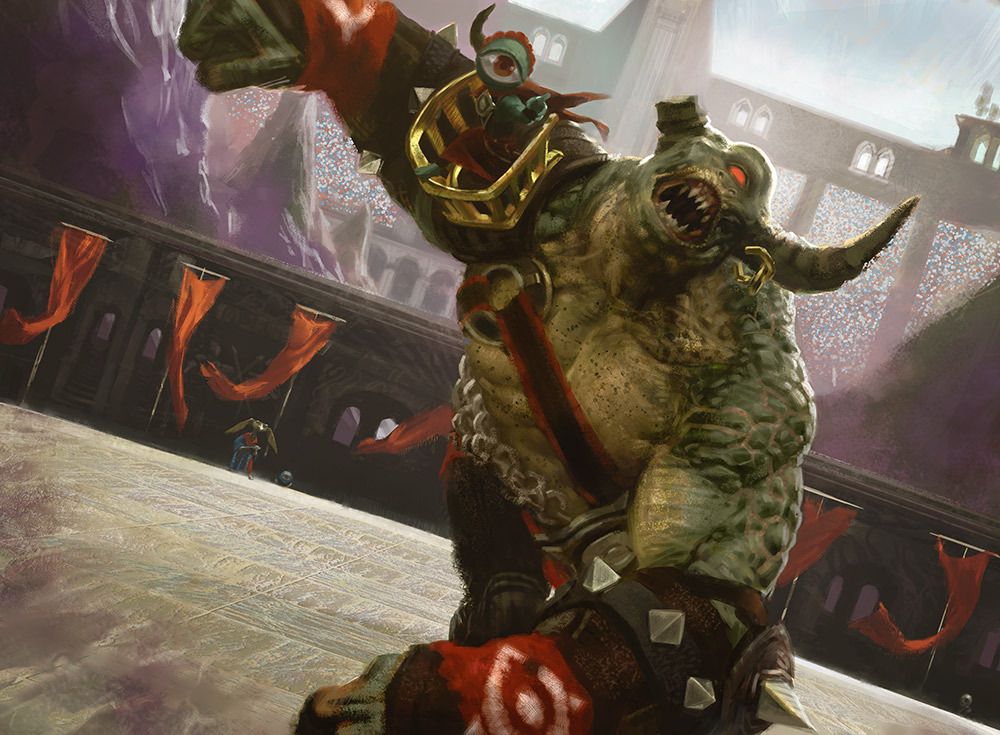
Okaun, Eye of Chaos | Illustration by Yongjae Choi
Commander (2)
Zndrsplt, Eye of Wisdom
Okaun, Eye of Chaos
Planeswalker (1)
Creature (19)
Creepy Doll
Frenetic Efreet
Goblin Archaeologist
Goblin Engineer
Goblin Kaboomist
Goblin Traprunner
Karplusan Minotaur
Kediss, Emberclaw Familiar
Krark, the Thumbless
Mogg Assassin
Mutalith, Vortex Beast
Niv-Mizzet Parun
Roaming Throne
Sakashima the Impostor
Spark Double
Tavern Scoundrel
The Locust God
Tribute Mage
Yusri, Fortune's Flame
Instant (11)
Chaos Warp
Counterspell
Cyclonic Rift
Desperate Gambit
Fighting Chance
Fling
Muddle the Mixture
Negate
Soul's Fire
Temur Battle Rage
Whir of Invention
Sorcery (9)
Blasphemous Act
Gamble
Game of Chaos
Reckless Handling
Seize the Day
Slip Through Space
Squee's Revenge
Stitch in Time
Vandalblast
Enchantment (7)
Chance Encounter
Footfall Crater
Impulsive Maneuvers
Mirror March
Planar Chaos
Propaganda
The Apprentice's Folly
Artifact (14)
Arcane Signet
Boompile
Commander's Plate
Crooked Scales
Izzet Signet
Krark's Thumb
Lightning Greaves
Mind Stone
Shadowspear
Sol Ring
Swiftfoot Boots
Talisman of Creativity
Thought Vessel
Whispersilk Cloak
Land (34)
Academy Ruins
Buried Ruins
Cascade Bluffs
Command Tower
Exotic Orchard
Great Furnace
Inventors' Fair
Izzet Boilerworks
Myriad Landscape
Reliquary Tower
Rogue's Passage
Shivan Reef
Steam Vent
Stormcarved Coast
Sulfur Falls
Temple of Epiphany
Training Center
Island x6
Mountain x11
True chaos decks are ones that maximize the randomness of the game by casting spells with huge splashy effects that don’t necessarily have a specific goal in mind. Chaos players are often less interested in winning and more focused on creating wild game states and memorable moments that don’t happen in a typical game.
Warp World is the quintessential chaos card, basically swapping everything on the board with a random arrangement of other cards that no one really has any agency in choosing. It’s also very common to see a coin-flip element incorporated into chaos decks, making Zndrsplt, Eye of Wisdom and Okaun, Eye of Chaos the most popular commanders for the archetype.
In the spirit of chaos, I generated a completely random decklist featuring chaos cards all mashed together. That comes courtesy of EDHREC’s “Average Deck” tool, so it’s more of an amalgamation of every chaos deck listed on their website. Is it functional? Who cares, it’s chaotic!
#10. Blink/Flicker
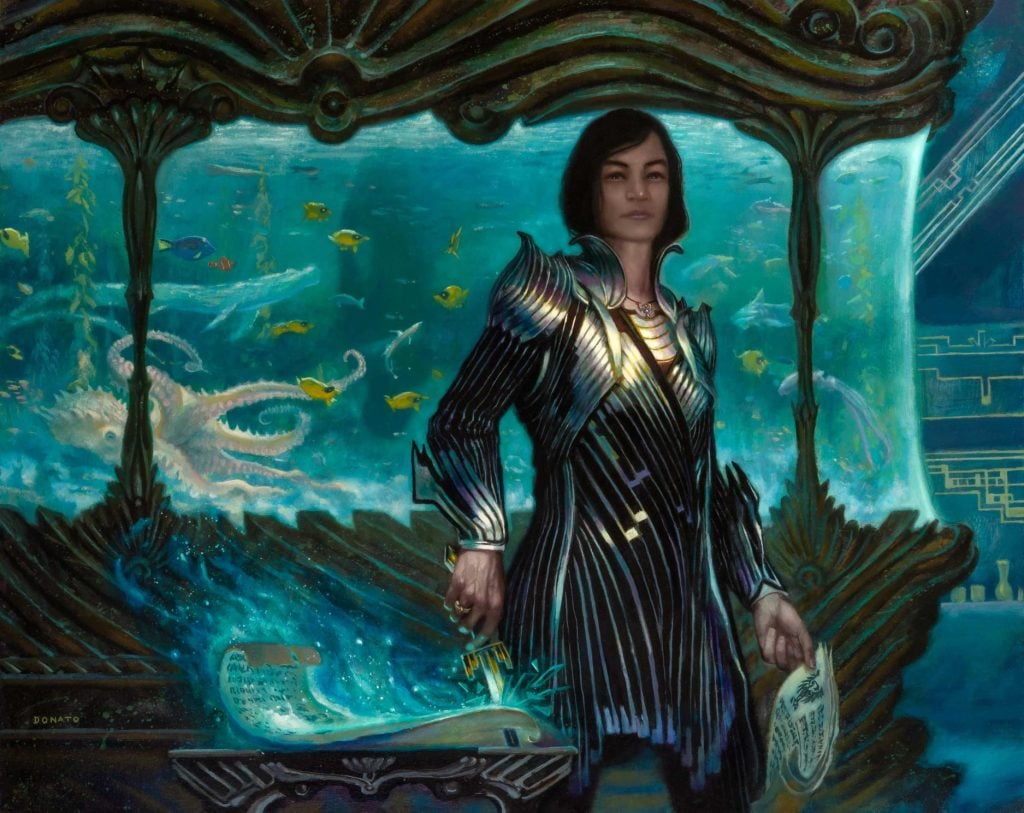
Lagrella, the Magpie | Illustration by Donato Giancola
Commander (1)
Creature (39)
Noble Hierarch
Niambi, Esteemed Speaker
Watcher for Tomorrow
Charming Prince
Coiling Oracle
Reflector Mage
Knight of Autumn
Wood Elves
Soulherder
Welcoming Vampire
Sea Gate Oracle
Endurance
Flickerwisp
Eternal Witness
Jadelight Ranger
Mystic Snake
Oji, the Exquisite Blade
Glen Elendra Archmage
Restoration Angel
Displacer Kitten
Stunt Double
Phantom Steed
Thassa, Deep-Dwelling
Palace Jailer
Venser, Shaper Savant
Solemn Simulacrum
Glorious Protector
Riftwing Cloudskate
Thragtusk
Acidic Slime
Karmic Guide
Seedborn Muse
Yorion, Sky Nomad
Reveillark
Cloudblazer
Mulldrifter
Sun Titan
Agent of Treachery
Soul of Emancipation
Instant (11)
Ephemerate
Brainstorm
Disorder in the Court
Heliod's Intervention
Momentary Blink
Eladamri's Call
Cyclonic Rift
Krosan Grip
Ghostly Flicker
Eerie Interlude
Bant Charm
Sorcery (1)
Enchantment (4)
Touch the Spirit Realm
Aura Shard
Smothering Tithe
Virtue of Knowledge
Artifact (8)
Sol Ring
Sensei's Divining Top
Arcane Signet
Fellwar Stone
Commander's Sphere
Cloudstone Curio
Sword of Hearth and Home
Panharmonicon
Land (36)
Command Tower
Reflecting Pool
Seaside Citadel
Spara's Headquarters
Krosan Verge
Brokers Hideout
Misty Rainforest
Windswept Heath
Flooded Strand
Sea of Clouds
Bountiful Promenade
Rejuvenating Springs
Temple Garden
Breeding Pool
Hallowed Fountain
Overgrown Farmland
Dreamroot Cascade
Deserted Beach
Sunpetal Grove
Azorius Chancery#
Canopy Vista
Horizon Canopy
Glacial Fortress
Prairie Stream
Island x4
Plains x4
Forest x4
Blink decks are two-parters that look to combine powerful ETBs with effects that let you reuse them.
They usually end up being value piles that draw tons of cards with things like Mulldrifter or Coiling Oracle, using repeatable blink effects like Soulherder and Teleportation Circle to turn those ETBs into a value engine.
The decklist here doesn’t have a concrete plan it’s trying to enact. Instead, it’s attempting to accrue so much value through ETB creatures that it just buries its opponents in card draw and options. Blink decks often cut back on removal spells since most of their interaction is tied to creature ETBs, though you still need a few Disenchant effects to make sure you’re not completely dead to a Torpor Orb.
#9. Spellslinger
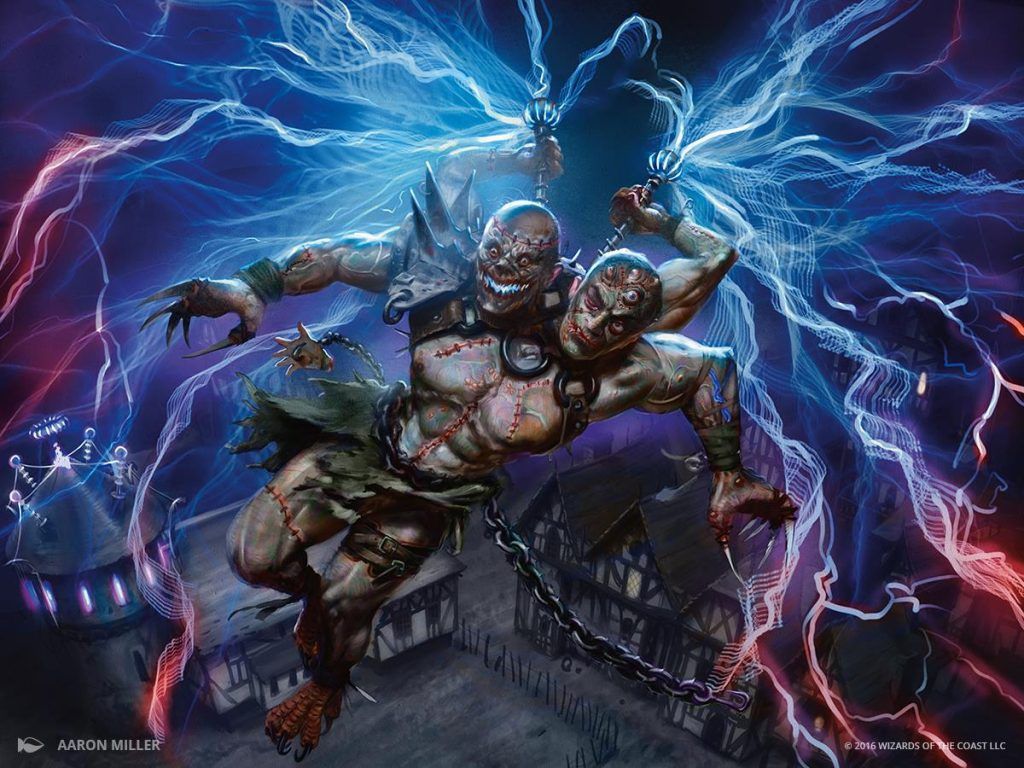
Kraum, Ludevic's Opus | Illustration by Aaron Miller
Commander (2)
Kraum, Ludevic's Opus
Tymna the Weaver
Planeswalker (4)
Elspeth, Knight-Errant
Professor Onyx
Ral, Izzet Viceroy
Saheeli, Sublime Artificer
Creature (26)
Archmage Emeritus
Blood Artist
Erebor Flamesmith
Exalted Flamer of Tzeentch
Kykar, Wind's Fury
Magnus the Red
Marneus Calgar
Monastery Mentor
Narset, Enlightened Exile
Niv-Mizzet, Parun
Patrician Geist
Pink Horror
Quintorius, Field Historian
Raff, Weatherlight Stalwart
Rona, Sheoldred's Faithful
Sanguinary Priest
Sedgemoor Witch
Selfless Spirit
Sevinne, the Chronoclasm
Storm-Kiln Artist
Thalia's Geistcaller
Third Path Iconoclast
Tor Wauki the Younger
Tormod, the Desecrator
Tura Kennerüd, Skyknight
Veyran, Voice of Duality
Instant (9)
Chaos Warp
Faithful Mending
Forbidden Alchemy
Lorehold Command
Oona's Grace
Ray of Distortion
Rotten Reunion
Sacred Fire
Think Twice
Sorcery (12)
Deep Analysis
Dread Return
Dusk / Dawn
Faithless Looting
Flame Jab
Hour of Reckoning
Lingering Souls
Rite of Oblivion
Rolling Temblor
Sevinne's Reclamation
Smiting Helix
Unburial Rites
Enchantment (3)
Birth of the Imperium
Burning Vengeance
Secrets of the Dead
Artifact (8)
Arcane Signet
Catalyst Stone
Chromatic Lantern
Darksteel Ingot
Skullclamp
Sol Ring
Thran Dynamo
Wayfarer's Bauble
Land (35)
Arcane Sanctum
Blood Crypt
Command Tower
Crumbling Necropolis
Desolate Lighthouse
Evolving Wilds
Field of Ruin
Godless Shrine
Hallowed Fountain
Island x3
Mountain x3
Mystic Monastery
Plains x3
Prairie Stream
Raffine's Tower
Raugrin Triome
Sacred Foundry
Savai Triome
Smoldering Marsh
Steam Vents
Swamp x3
Temple of Enlightenment
Temple of Epiphany
Temple of Silence
Temple of Triumph
Terramorphic Expanse
Xander's Lounge
Spellslinger decks usually feature a low creature count in favor of instants and sorceries, sometimes just non-creature spells in general. This is an A+B archetype that combines spells with spell payoffs.
Your Ponders and Brainstorms are already solid in most decks, but they’re even better when they’re triggering cards like Guttersnipe or Archmage Emeritus.
The decklist here comes from user KitKatBars on Moxfield, with a spellslinger deck that focuses on flashback and casting spells from the graveyard. While this deck features a fairly high number of creatures, it showcases the types of payoffs you can expect from the spellslinger archetype.
#8. Enchantress
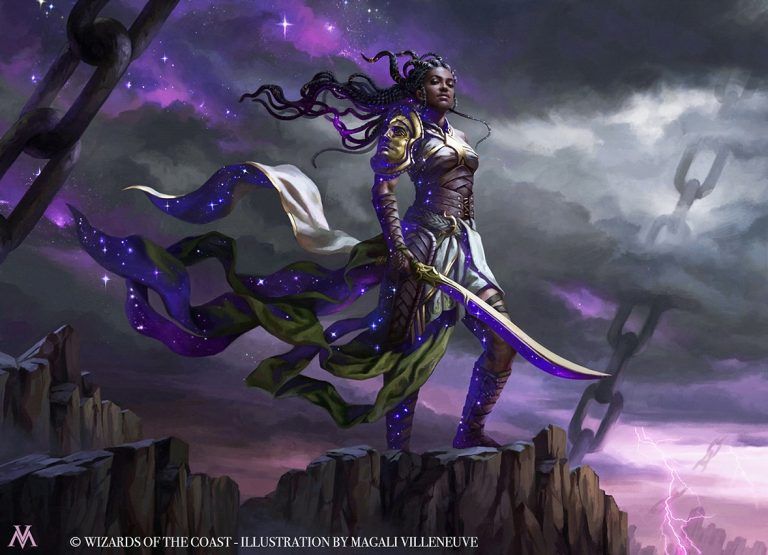
Anikthea, Hand of Erebos | Illustration by Magali Villeneuve
Commander (1)
Planeswalker (1)
Creature (19)
Calix, Guided by Fate
Demon of Fate's Design
Doomwake Giant
Dryad of the Ilysian Grove
Eidolon of Blossoms
Elesh Norn, Mother of Runes
Erebos, Bleak-Hearted
Erebos, God of the Dead
Grim Guardian
Mesa Enchantress
Nylea's Colossus
Nyxbloom Ancient
Nyxborn Behemoth
Sanctum Weaver
Satyr Enchanter
Setessan Champion
Sythis, Harvest's Hand
Thoughtrender Lamia
Verduran Enchantress
Instant (6)
Assassin's Trophy
Heroic Intervention
Path to Exile
Rootborn Defenses
Second Harvest
Swords to Plowshares
Sorcery (5)
Eerie Ultimatum
Extinguish All Hope
Kodama's Reach
Migration Path
Skyshroud Claim
Enchantment (32)
Anointed Procession
Aura Shards
Aura of Silence
Authority of Consuls
Binding of the Old Gods
Blind Obedience
Boon of the Spirit Realm
Cacophony Unleashed
Cemetery Tampering
Elspeth Conquers Death
Enchantress's Presence
Endless Ranks of the Dead
Ghostly Prison
Hallowed Haunting
Inspiring Leader
Liliana's Mastery
Mirari's Wake
Necromancer's Covenant
Out of the Tombs
Parallel Lives
Privileged Position
Sigil of the Empty Throne
Song of the Worldsoul
Sphere of Safety
Sterling Grove
Stony Silence
Sylvan Library
Teleportation Circle
Three Blind Mice
Tribute to the World Tree
Tymaret Calls the Dead
Wound Reflection
Land (36)
Ash Barrens
Canopy Vista
Caves of Koilos
Command Tower
Evolving Wilds
Exotic Orchard
Forest x6
Grasslands
Haunted Mire
Llanowar Wastes
Myriad Landscape
Path of Ancestry
Plains x6
Radiant Grove
Sandsteppe Citadel
Sungrass Prairie
Sunlit Marsh
Swamp x5
Temple of Malady
Temple of Plenty
Temple of Silence
Terramorphic Expanse
Enchantress is all about enchantments. What a twist!
These decks have a much higher-than-usual enchantment count, using cards like Argothian Enchantress and Enchantress's Presence as payoffs.
Enchantress decks often feature a pillow-fort element, stacking effects like Ghostly Prison and Sphere of Resistance to ward off combat. The decklist featured here comes from GibButtkins98 on Moxfield and uses Anikthea, Hand of Erebos as a value commander combined with constellation cards, pillow-fort enchantments, and all the typical enchantress card advantage engines.
#7. Affinity/Artifacts
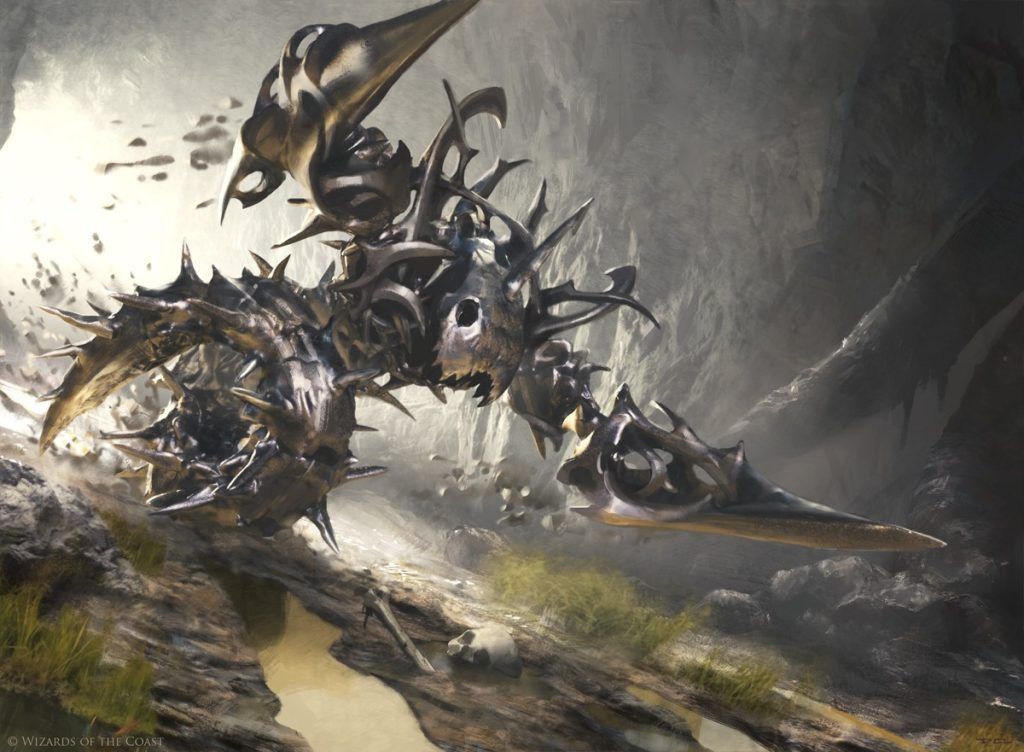
Armix, Filigree Thrasher | Illustration by Daniel Ljunggren
Commander (2)
Armix, Filigree Thrasher
Keskit, the Flesh Sculptor
Planeswalker (1)
Creature (22)
Walking Ballista
Disciple of the Vault
Chronomancer
Virus Beetle
Triarch Praetorian
Psychomancer
Arcbound Ravager
Burnished Hart
Scrap Trawler
Weaponcraft Enthusiast
Lodestone Golem
Grim Hireling
Imotekh the Stormlord
Kuldotha Forgemaster
Duplicant
Noxious Gearhulk
Marionette Master
Phyrexian Fleshgorger
Meteor Golem
Technomancer
Herald of Anguish
Metalwork Colossus
Instant (2)
Sorcery (6)
Battle at the Bridge
Terisiare's Devastation
Monumental Corruption
Taste of Death
Their Name is Death
All Is Dust
Enchantment (2)
Underhanded Designs
Agent of the Iron Throne
Artifact (29)
Sol Ring
Bag of Devouring
Blood Fountain
Smuggler's Copter
Noble's Purse
Jet Medallion
Reckoner Bankbuster
Ichor Wellspring
Prized Statue
Cranial Plating
Treasure Map
Charcoal Diamond
Mycosynth Wellspring
Lightning Greaves
Sculpting Steel
Skeleton Shard
Nettlecyst
Bontu's Monument
Aetherflux Reservoir
Mystic Forge
Trading Post
Slagstone Refinery
The One Ring
Weatherlight
Hedron Archive
Gilded Lotus
Ugin's Nexus
Bolas's Citadel
Portal to Phyrexia
Land (37)
Shrine of the Forsaken Gods
Temple of the False God
Myriad Landscape
War Room
Mishra's Factory
Reliquary Tower
Arch of Orazca
Hall of Tagsin
Wasteland
Inventors' Fair
Bojuka Bog
Cabal Stronghold
Castle Locthwain
Urborg, Tomb of Yawgmoth
Swamp x23
The analog to enchantress decks, artifact decks, sometimes nicknamed “affinity decks,” are exactly what they sound like. They use artifacts as a central theme of the deck, though that covers a wide array of different mini-archetypes, like equipment or vehicles. It’s the most popular deck archetype according to EDHREC. Basically, take any other archetype you can think of, slap artifact onto its name, and you have a viable sub-archetype.
The decklist here has most of the elements you can expect from an artifact deck, regardless of color identity. It has sac outlets, tutors, ramp spells, and wincons, all of which are tailored specifically towards artifacts.
#6. Infect
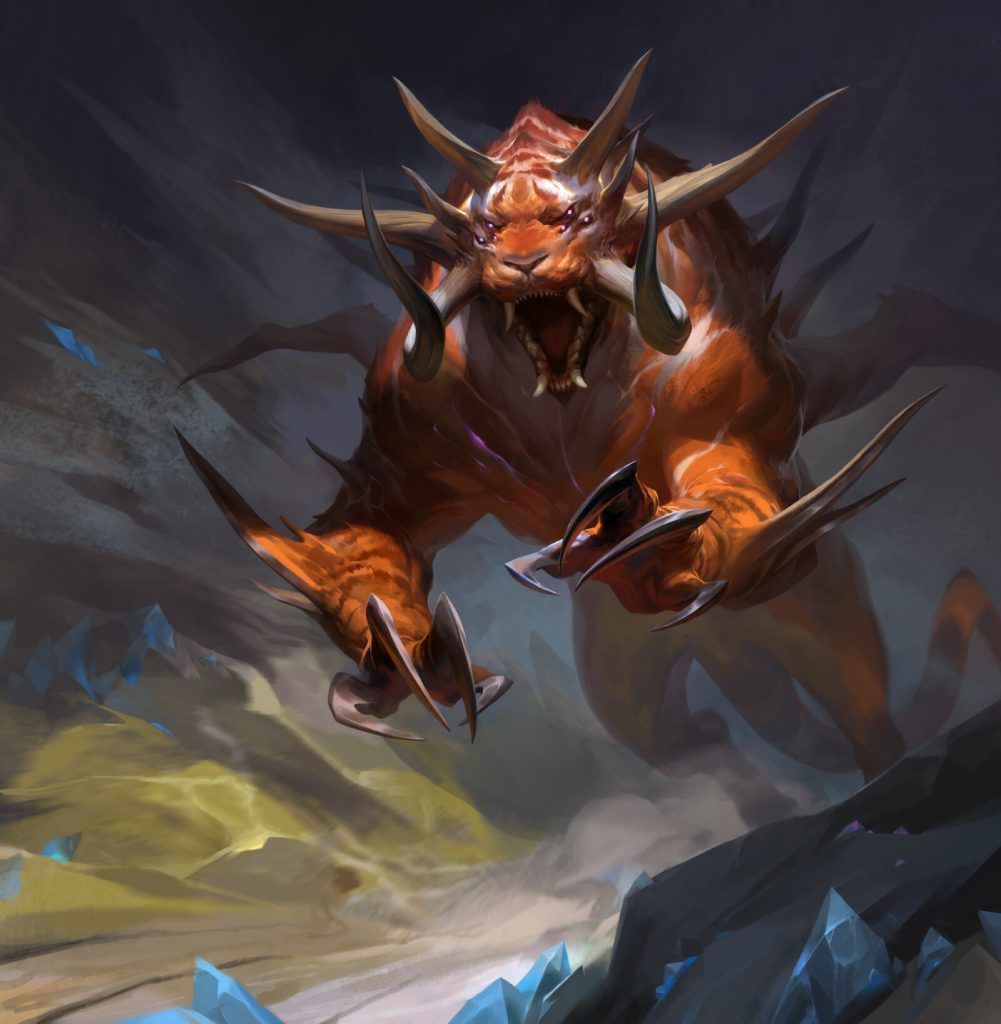
Snapdax, Apex of the Hunt | Illustration by Viktor Titov
Commander (1)
Planeswalker (2)
Jeska, Thrice Reborn
Vraska, Betrayal's Sting
Creature (28)
Cacophony Scamp
Crawling Chorus
Bilious Skulldweller
Blightbelly Rat
Plague Stinger
Myr Convert
Necropede
Plague Myr
Killian, Ink Duelist
Grateful Apparition
Kediss, Emberclaw Familiar
Lost Leonin
Ichorclaw Myr
Phyrexian Crusader
Ichor Rats
Necropanther
Whispering Specter
Annex Sentry
Porcuparrot
Cubwarden
Dirge Bat
Everquill Phoenix
Vulpikeet
Flesh-Eater Imp
Core Prowler
Cavern Whisperer
Mindleecher
Chittering Harvester
Instant (11)
Whisper of the Dross
Ephemerate
Swords to Plowshares
Tainted Strike
Ride Down
Leave
Boros Charm
Arcbond
Volt Charge
Deflecting Swat
Vraska's Fall
Sorcery (6)
Drown in Ichor
Ascend from Avernus
Infectious Inquiry
Caress of Phyrexia
Chandra's Ignition
Ruinous Ultimatum
Enchantment (3)
Land Tax
Necrogen Communion
Skrelv's Hive
Artifact (12)
Skullclamp
Sol Ring
Arcane Signet
Boros Signet
Rakdos Signet
Contagion Clasp
Fellwar Stone
Swiftfoot Boots
Coalition Relic
Staff of Compleation
Commander's Sphere
God-Pharoah's Gift
Land (37)
Savai Triome
Nomad Outpost
Exotic Orchard
Command Tower
Path of Ancestry
Fabled Passage
Evolving Wilds
Terramorphic Expanse
Rogue's Passage
Ash Barrens
Myriad Landscape
Temple of the False God
Slayers' Stronghold
Marsh Flats
Brightclimb Pathway
Shattered Sanctum
Fetid Heath
Luxury Suite
Blood Crypt
Haunted Ridge
Needleverge Pathway
Rugged Prairie
Swamp x5
Plains x5
Mountain x5
Everyone’s fave. Infect refers to any deck that’s trying to win with poison as an alternate wincon.
While many players associate infect with Blightsteel Colossus, Tainted Strike, or Triumph of the Hordes, those are cards that win independently of an actual infect strategy, and they’ve kind of sullied the strategy as a whole for many players.
A true infect deck loads up on infect/toxic creatures and proliferate effects. Those creatures are often woefully under-stated, so you’ll need evasion and pump effects to try and push through as much poison damage as possible.
The list provided is a powered-down infect deck that combines poison creatures with a mutate package. It’s intentionally weaker than your average Commander deck to accommodate for people’s disgust towards poison, though it can still pull of some exciting wins.
#5. Stax
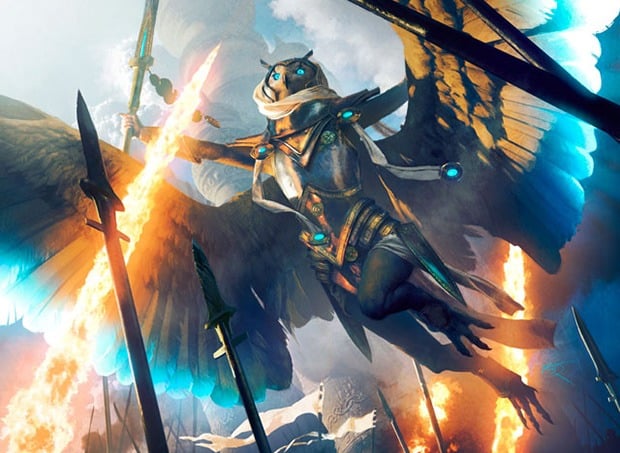
Derevi, Empyrial Tactician | Illustration by Michael Komarck
Commander (1)
Creature (19)
Avacyn's Pilgrim
Birds of Paradise
Mother of Runes
Noble Hierarch
Quirion Ranger
Bloom Tender
Ethersworn Canonist
Grand Abolisher
Aven Mindcensor
Eldrazi Displacer
Hushwing Gryff
Kinjalli's Sunwing
Mirri, Weatherlight Duelist
Recruiter of the Guard
Trophy Mage
Trygon Predator
Hokori, Dust Drinker
Stoic Angel
Seedborn Muse
Instant (8)
Enlightened Tutor
Path to Exile
Swords to Plowshares
Cyclonic Rift
Dramatic Reversal
Eladamri's Call
Muddle the Mixture
Beast Within
Sorcery (4)
Green Sun's Zenith
Fabricate
Supreme Verdict
Wrath of God
Enchantment (10)
Burgeoning
Root Maze
Rest in Peace
Stasis
Stony Silence
Aura Shards
Aura of Silence
Ghostly Prison
Propaganda
Nature's Will
Artifact (21)
Grafdigger's Cage
Mana Vault
Meekstone
Pithing Needle
Sensei's Divining Top
Sol Ring
Azorius Signet
Isochron Scepter
Lightning Greaves
Selesnya Signet
Simic Signet
Swiftfoot Booths
Torpor Orb
Winter Orb
Mana Web
Scepter of Dominance
Static Orb
Sword of Feast and Famine
Tangle Wire
Trinisphere
Smokestack
Land (36)
Adarkar Wastes
Ancient Tomb
Botanical Sanctum
Bountiful Promenade
Breeding Pool
Brushland
City of Brass
Command Tower
Flooded Strand
Forest x4
Glacial Fortress
Hallowed Fountain
Island x4
Mana Confluence
Misty Rainforest
Plains x4
Razorverge Thicket
Reliquary Tower
Sea of Clouds
Seachrome Coast
Seaside Citadel
Strip Mine
Sunpetal Grove
Temple Garden
Wasteland
Windswept Heath
Yavimaya Coast
Stax derives its name from the card Smokestack, which should be an indication of how these decks play out. They aren’t really interested in anyone having fun; instead, they want to lock players out of certain game actions, either by cutting off access to mana or punishing certain types of cards and colors.
Be warned that Stax decks are typically frowned upon at casual tables. People don’t really sit down to play Magic in the hopes of not playing Magic, so you should probably save your Stax deck for a table of players you know well or for a more competitive setting.
The Stax list presented comes from an Anonymous user on MTGGoldfish. It’s lead by the infamous Derevi, Empyrial Tactician, using its ability to untap permanents to play around lockdown pieces like Stasis and Winter Orb while opponents struggle to get enough mana to do anything. The list is from 2018 and would likely look different if rebuilt today, but it captures the essence of what Stax decks want to do.
#4. Theft Decks
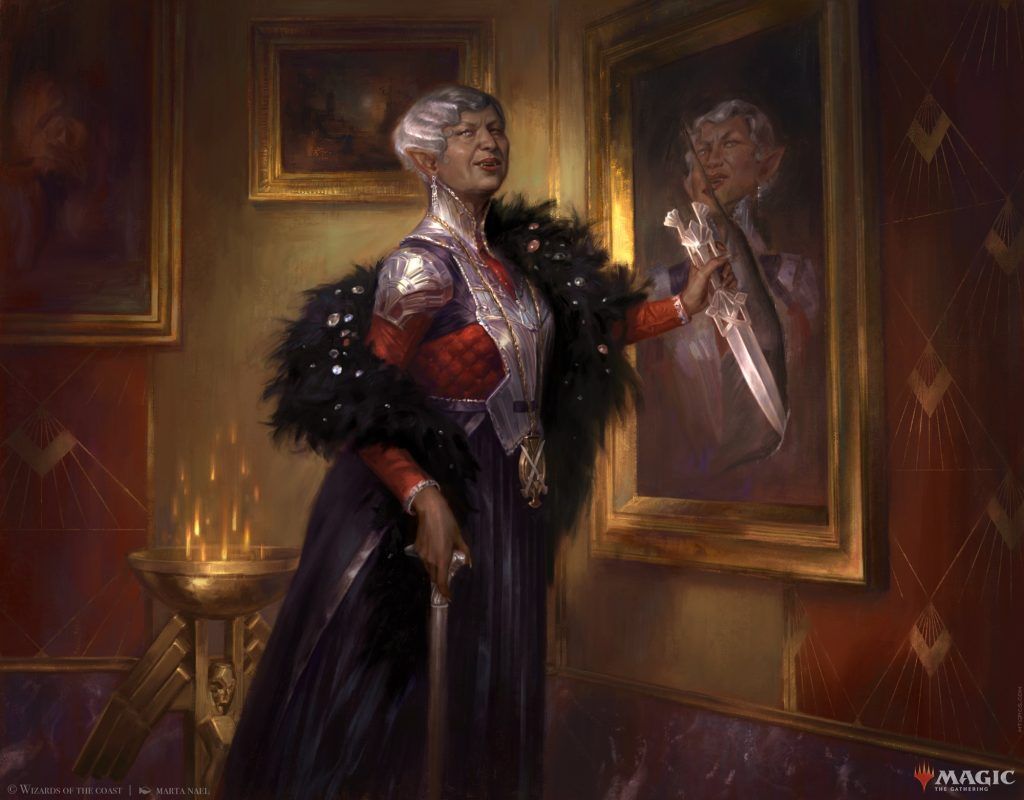
Evelyn, the Covetous | Illustration by Marta Nael
Commander (1)
Planeswalker (1)
Creature (23)
Ragavan, Nimble Pilferer
Thieving Skydiver
Baleful Strix
Robber of the Rich
Dire Fleet Daredevil
Valki, God of Lies
Grenzo, Havoc Raiser
Dauthi Voidwalker
Thief of Sanity
Halo Forager
Vedalken Plotter
Cosima, God of the Voyage
Nightveil Specter
Thada Adel, Acquisitor
Kheru Mind-Eater
Hostage Taker
Don Andres, the Renegade
Gonti, Lord of Luxury
Evil Twin
Zareth San, the Trickster
Plargg and Nassari
Author of Shadows
Xanathar, Guild Kingpin
Instant (10)
You Find Some Prisoners
Fumble
Siphon Insight
Rakdos Charm
Sudden Spoiling
Crosis's Charm
Fierce Guardianship
Maestros Charm
Memory Plunder
Nurgle's Conscription
Sorcery (8)
Inevitable Betrayal
Extract Brain
Praetor's Grasp
Evacuation
Devastation Tide
Blatant Thievery
Breach the Multiverse
Fevered Suspicion
Enchantment (5)
Mirrormade
King Narfi's Betrayal
Leyline of Anticipation
The Ruinous Powers
Mind's Dilation
Artifact (14)
Sol Ring
Thaumatic Compass
Dimir Signet
Fellwar Stone
Arcane Signet
Rakdos Signet
Izzet Signet
Crystal Shard
Vedalken Shackles
Commander's Sphere
Realmbreaker, the Invasion Tree
Mirage Mirror
Solemn Simulacrum
Wand of Wonder
Land (38)
Polluted Delta
Sunken Hollow
Fetid Pools
Morphic Pool
Watery Grave
Training Center
Steam Vents
Scalding Tarn
Luxury Suite
Blood Crypt
Dragonskull Summit
Haunted Ridge
Path of Ancestry
Command Tower
Exotic Orchard
Crumbling Necropolis
Xander's Lounge
Maestros Theater
Ash Barrens
Evolving Wilds
Bojuka Bog
Mystic Sanctuary
Thespian's Stage
Mountain x4
Swamp x2
Island x9
Theft decks want to turn their opponents’ decks against themselves. The strategy revolves around borrowing creatures and spells from your opponents and using them to your advantage.

Some versions rely on Threaten effects which steal creatures temporarily, while others use abilities like the one on Gonti, Lord of Luxury to “draw” cards from opposing decks.
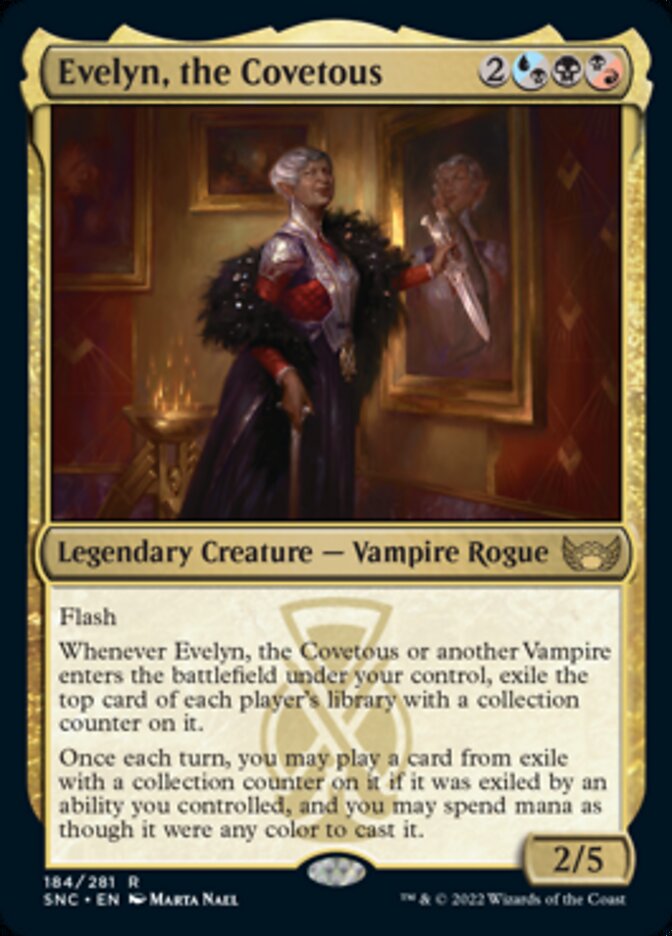
This Evelyn, the Covetous list features very few wincons of its own. It’s heavy on interaction, but otherwise relies on the opponents’ best cards to win the game instead.
#3. Paradox

The Thirteenth Doctor | Illustration by Pauline Voss
Commander (2)
The Thirteenth Doctor
Yasmin Khan
Creature (24)
Dan Lewis
Graham O'Brien
Memory Worm
Nardole, Resourceful Cyborg
Sisterhood of Karn
Thijarian Witness
Jenny Flint
River Song
Ryan Sinclair
Bill Potts
Danny Pink
Iraxxa, Empress of Mars
Madame Vastra
Osgood, Operation Double
The Foretold Soldier
Karvanista, Loyal Lupari
Me, the Immortal
Strax, Sontaran Nurse
The Fugitive Doctor
The Twelfth Doctor
Clara Oswald
Lunar Hatchling
Flaming Tyrannosaurus
Frost Fair Lure Fish
Instant (7)
Growth Spiral
Surge of Brilliance
Think Twice
Beast Within
Chaos Warp
Flatline
Decaying Time Loop
Sorcery (14)
Ponder
Preordain
Farseek
Start the TARDIS
Cultivate
Impending Flux
Search for Tomorrow
Wreck and Rebuild
Throes of Chaos
Truth or Consequences
Into the Time Vortex
Last Night Together
Quantum Misalignment
Twice Upon a Time
Enchantment (7)
Carpet of Flowers
Heaven Sent
The Flux
Become the Pilot
Bigger on the Inside
Fugitive of the Judoon
Return the Past
Artifact (10)
Sol Ring
Arcane Signet
Psychic Paper
TARDIS
Talisman of Curiosity
Talisman of Impulse
Confession Dial
Cursed Mirror
River Song's Diary
Sonic Screwdriver
Land (36)
Cinder Glade
Command Tower
Desolate Lighthouse
Dreamroot Cascade
Exotic Orchard
Fiery Islet
Forest x4
Frontier Bivouac
Frostboil Snarl
Gallifrey Council Chamber
Game Trail
Island x4
Mountain x3
Myriad Landscape
Ominous Cemetery
Path of Ancestry
Reliquary Tower
Rockfall Vale
Rogue's Passage
Rootbound Crag
Sheltered Thicket
Stormcarved Coast
Temple of Abandon
Temple of Epiphany
Temple of Mystery
Temple of the False God
Vineglimmer Snarl
Waterlogged Grove
The term paradox comes from the mechanic of the same name introduced in Doctor Who. While the mechanic itself is pretty general, there now exist quite a few cards that reward players from casting spells from zones other than their hands, usually from exile.
These make for very popular cards, with some notable commanders being Prosper, Tome-Bound, Faldorn, Dread Wolf Herald, and Vega, the Watcher. The Paradox Power precon is a perfect showcase of just how many different mechanics in Magic work with this type of strategy.
#2. Legends Matter/Historic
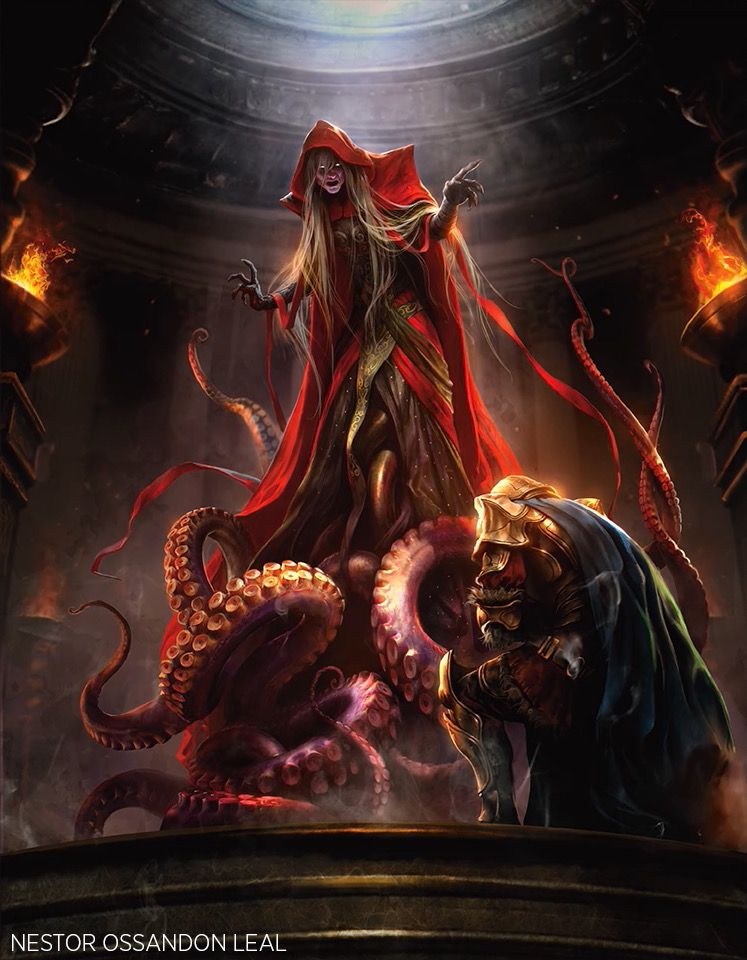
Dihada, Binder of Wills | Illustration by Nestor Ossandon Leal
Commander (1)
Creature (28)
Adriana, Captain of the Guard
Alesha, Who Smiles at Death
Anafenza, Kin-Tree Spirit
Arvad the Cursed
Ashling the Pilgrim
Bell Borca, Spectral Sergeant
Bladewing, Deathless Tyrant
Cadric, Soul Kindler
Captain Lannery Storm
Kothophed, Soul Hoarder
Drana, Liberator of Malakir
Etali, Primal Storm
Garna, the Bloodflame
Jazal Goldmane
Josu Vess, Lich Knight
Kari Zev, Skyship Raider
Krenko, Tin Street Kingpin
Moira, Urborg Haunt
Neheb, Dreadhorde Champion
Odric, Lunarch Marshal
Shanid, Sleepers' Scourge
Tajic, Blade of the Legion
Teshar, Ancestor's Apostle
The Peregrine Dynamo
Traxos, Scourge of Kroog
Verrak, Warped Sengir
Zeriam, Golden Wind
Zetalpa, Primal Dawn
Sorcery (7)
Primevals' Glorious Rebirth
Urza's Ruinous Blast
Faithless Looting
Kaya's Wrath
Night's Whisper
Read the Bones
Ambition's Cost
Instant (7)
Bedevil
Generous Gift
Hero's Downfall
Mortify
Thrill of Possibility
Unbreakable Formation
Wear / Tear
Artifact (17)
Blackblade Reforged
Bontu's Monument
Commander's Sphere
Arcane Signet
Fellwar Stone
Gerrard's Hourglass Pendant
Hazoret's Monument
Hedron Archive
Hero's Blade
Heroes' Podium
Honor-Worn Shaku
Oketra's Monument
Sol Ring
Sword of the Chosen
Tenza, Godo's Maul
The Circle of Loyalty
The Reaver Cleaver
Enchantment (1)
Land (39)
Battlefield Forge
Bojuka Bog
Boros Garrison
Command Tower
Dragonskull Summit
Evolving Wilds
Foreboding Ruins
Geier Reach Sanitarium
Mikokoro, Center of the Sea
Mobilized District
Nomad Outpost
Orzhov Basilica
Rakdos Carnarium
Reliquary Tower
Shivan Gorge
Shizo, Death's Storehouse
Smoldering Marsh
Temple of Malice
Temple of Silence
Temple of Triumph
Terramorphic Expanse
Tyrite Sanctum
Caves of Koilos
Mountain x5
Plains x6
Swamp x5
Legendary-matters decks are easier to build than they’ve ever been. Legendary spells and payoffs are a key part of so many new sets that you can build legends-matter decks across a variety of different color pairs without much overlap.

The strategy often boils down to “legendary good-stuff,” though you might incorporate a historic theme into these decks since legendary cards are indeed historic. The Dihada, Binder of Wills precon has a fair amount of fluff and filler, but it’s easily customizable and highlights exactly how a legends-matter deck tends to look.
#1. Mill
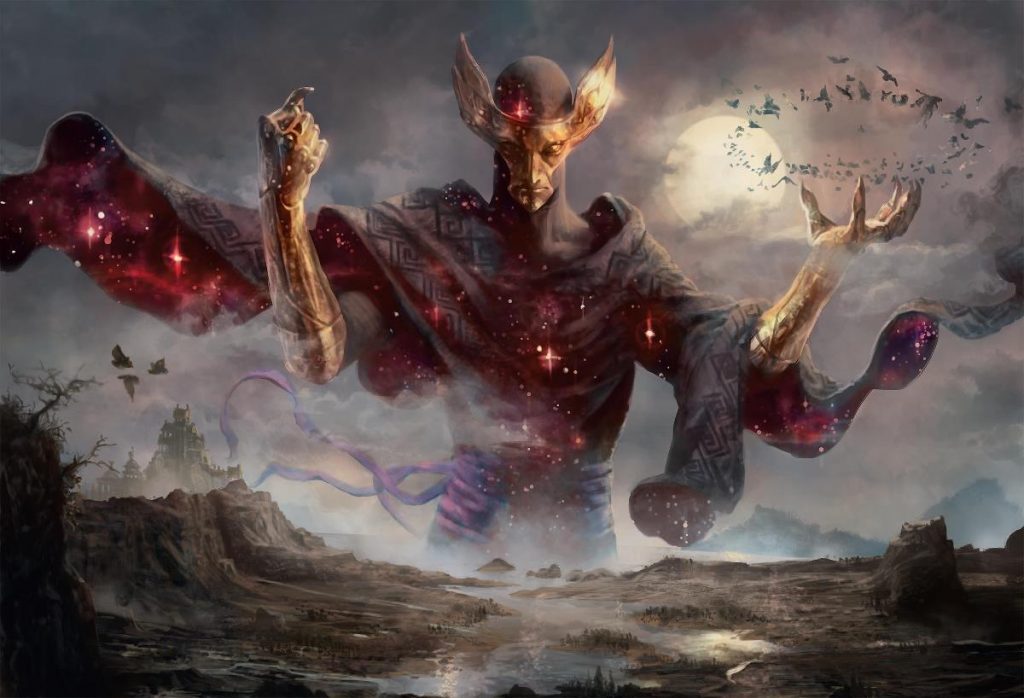
Phenax, God of Deception | Illustration by Ryan Barger
Commander (1)
Planeswalker (1)
Creature (32)
Canoptek Scarab Swarm
Charix, the Raging Isle
Consecrated Sphinx
Consuming Aberration
Deceiver Exarch
Diluvian Primordial
Draining Whelk
Elder Deep-Fiend
Endbringer
Ertai Resurrected
Farmstead Gleaner
Hullbreaker Horror
Jace's Archivist
Lochmere Serpent
Mocking Doppelganger
Morphling
Necron Deathmark
Nighthowler
Nymris, Oona's Trickster
Oblivion Sower
Phyrexian Metamorph
Sicarian Infiltrator
Sire of Stagnation
Sphinx of the Second Sun
Stunt Double
Subtlety
Teferi, Mage of Zhalfir
The Ancient One
Thryx, the Sudden Storm
Torrential Gearhulk
Umbris, Fear Manifest
Voracious Greatshark
Instant (12)
Access Denied
Arcane Denial
Crypt Incursion
Cyclonic Rift
Desertion
Drown in the Loch
Evacuation
Expel from Orazca
Grave Endeavor
Mana Drain
See Double
Swan Song
Sorcery (2)
Enchantment (5)
Intruder Alarm
Leyline of the Void
Mystic Remora
Rhystic Study
Search for Azcanta
Artifact (11)
Arcane Signet
Bonehoard
Guardian Idol
Mana Crypt
Midnight Clock
Sapphire Medallion
Sol Ring
Talisman of Dominance
The Everflowing Well
Thousand-Year Elixir
Worn Powerstone
Land (36)
Bojuka Bog
Clearwater Pathway
Command Tower
Dimir Aqueduct
Dreadship Reef
Drowned Catacomb
Fetid Pools
Hall of the Storm Giants
High Market
Island x7
Labyrinth of Skophos
Lonely Sandbar
Minamo, School at Water's Edge
Morphic Pool
Otawara, Soaring City
Pit of Offerings
Polluted Delta
River of Tears
Scavenger Grounds
Sunken Hollow
Sunken Ruins
Swamp x4
Takenuma, Abandoned Mire
Underground River
Underground Sea
Urborg, Tomb of Yawgmoth
Watery Grave
Another fan-favorite. Self-mill is its own sub-category of graveyard decks, but real mill decks are trying to put their opponents to zero cards in library. Like infect, mill is loathed by many players, even though it’s really just as viable of a strategy as any other and often backfires (most decks benefit from having more cards in their graveyard).

The list comes from username vantharion on Moxfield. It features a small flash package to play control (mill decks often incorporate a control plan), and a healthy number of untap effects that work specifically with Phenax, God of Deception. You’ll notice an abundance of graveyard hate to mitigate the risk of milling graveyard strategies and other opponents into valuable recurrable pieces.
Commanding Conclusion
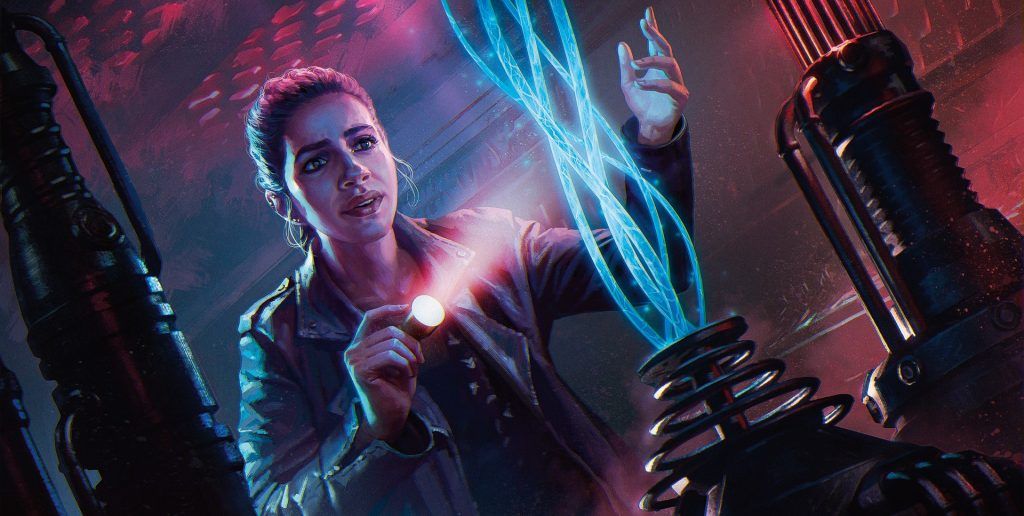
Yasmin Khan | Illustration by Andrey Kuzinskiy
Today I learned how long it takes to type up 25 different Commander decklists. Okay, that’s a bit of an exaggeration since I recycled some precon lists I already had on my computer. Let’s call it a paltry 20 then. Either way, hopefully you learned something new here or reinforced something you already knew.
Just to reiterate, this isn’t a list of every archetype in Commander, but it encompasses the majority of the most widely-played strategies, with overlap between them, and plenty that split off into their own subsets of micro-archetypes.
I tried to be representative of the major players and deck classifications, but thankfully I have you, the reader, to check behind me. If I missed a key archetype that should’ve been mentioned, or if you have any particular favorites you want to chat about, let me know in the comments below or over in the Draftsim Discord.
Thank you for making Draftsim your #1 stop for all things Magic!
Follow Draftsim for awesome articles and set updates: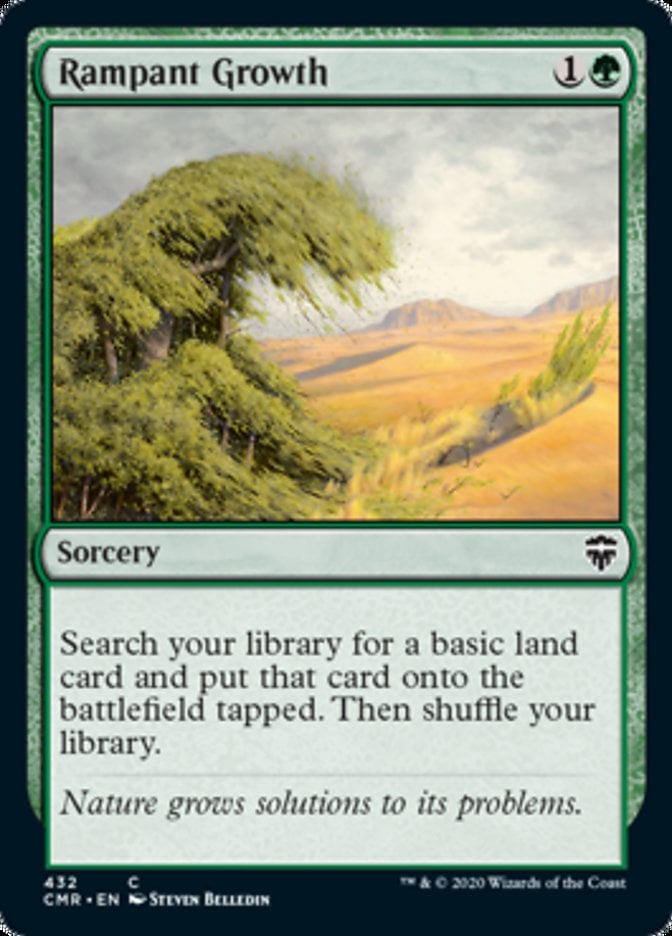
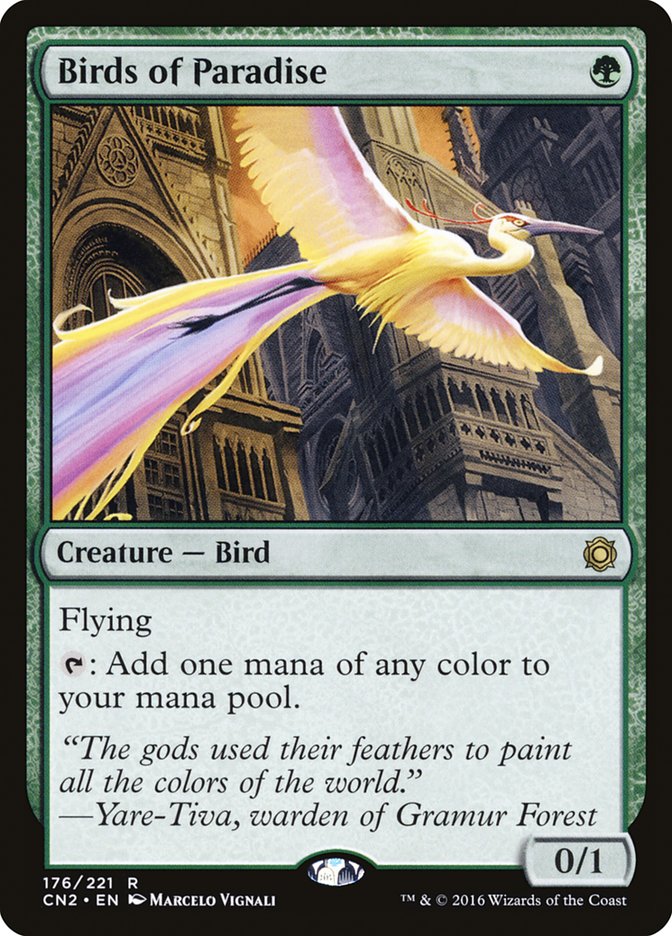
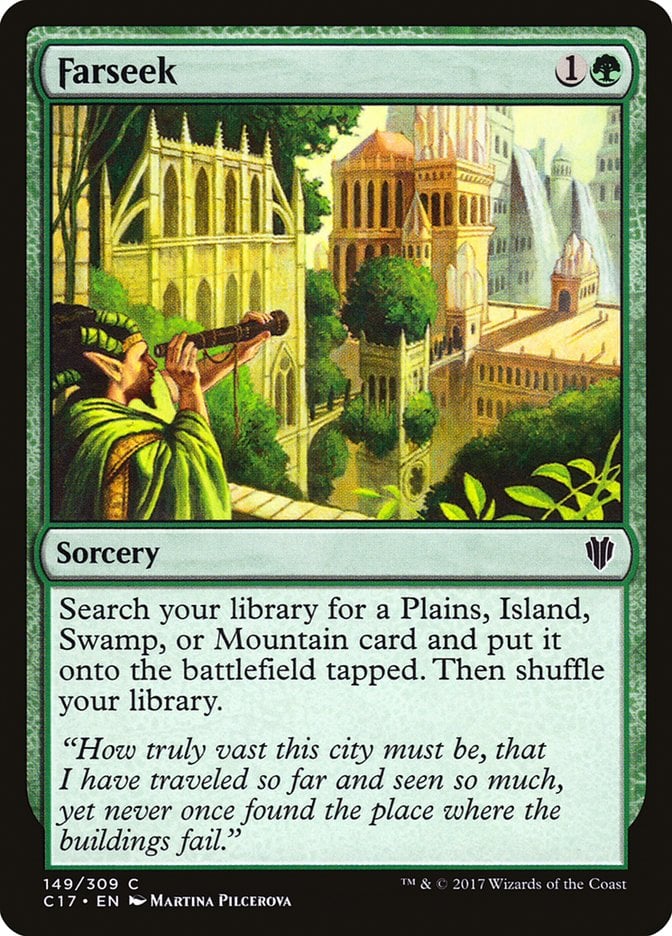
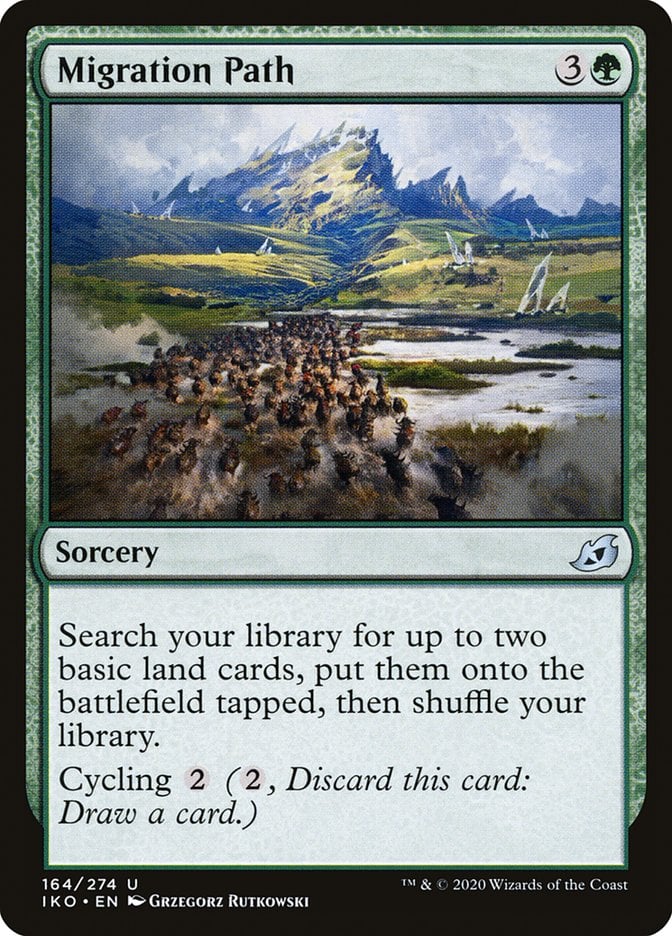
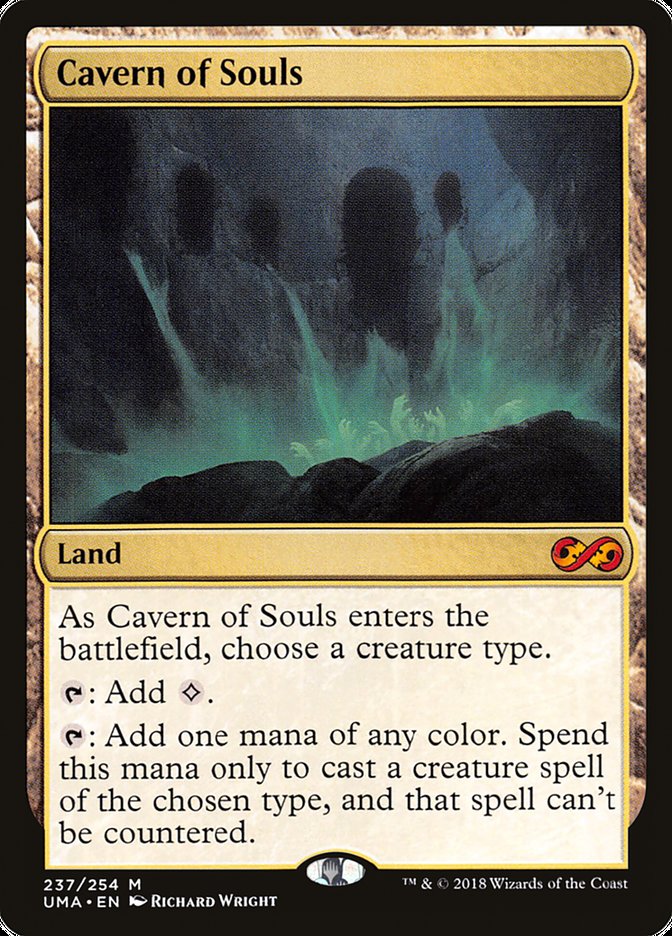
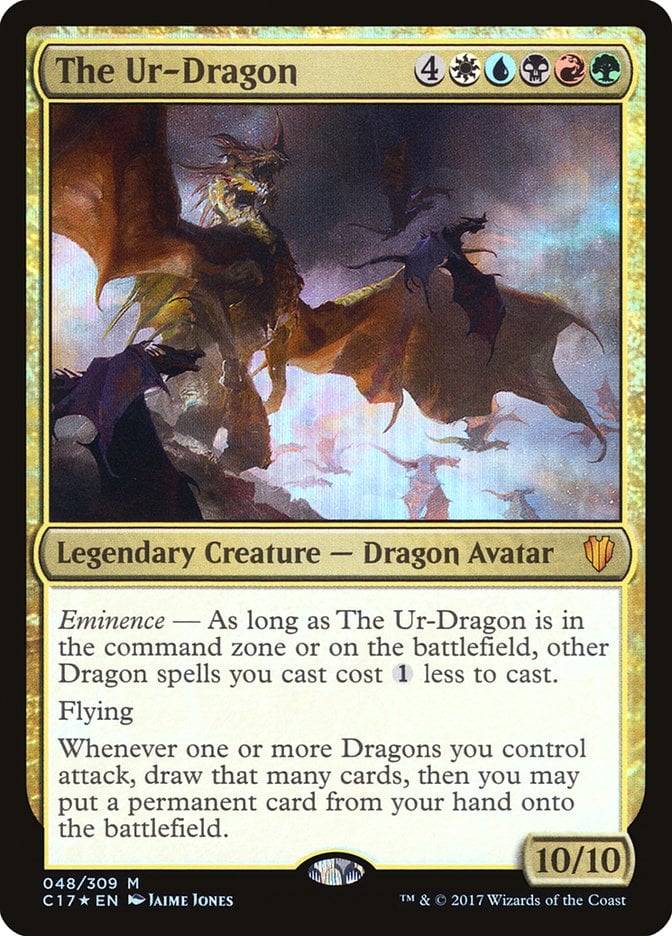
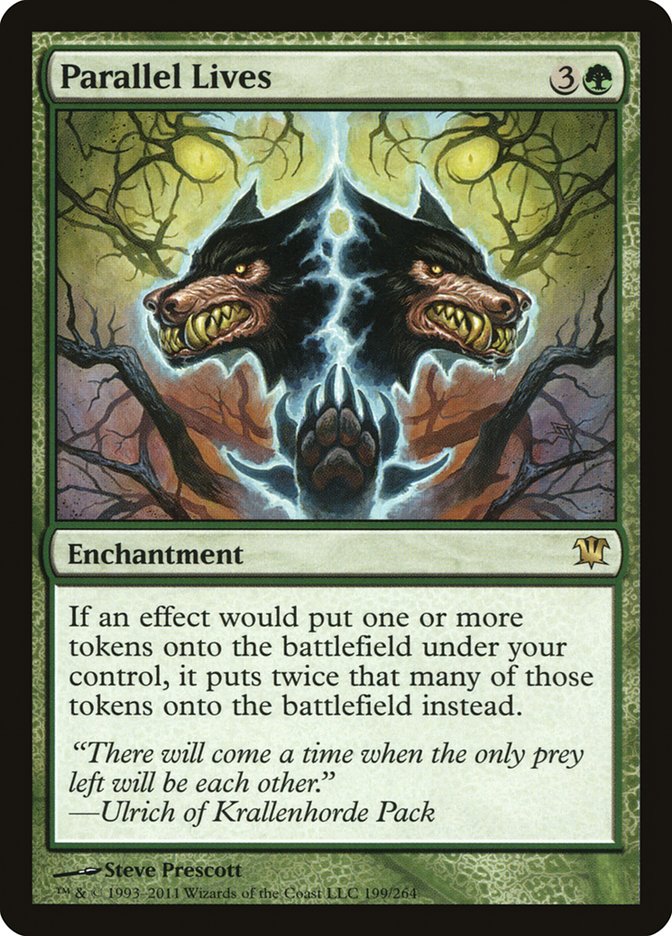
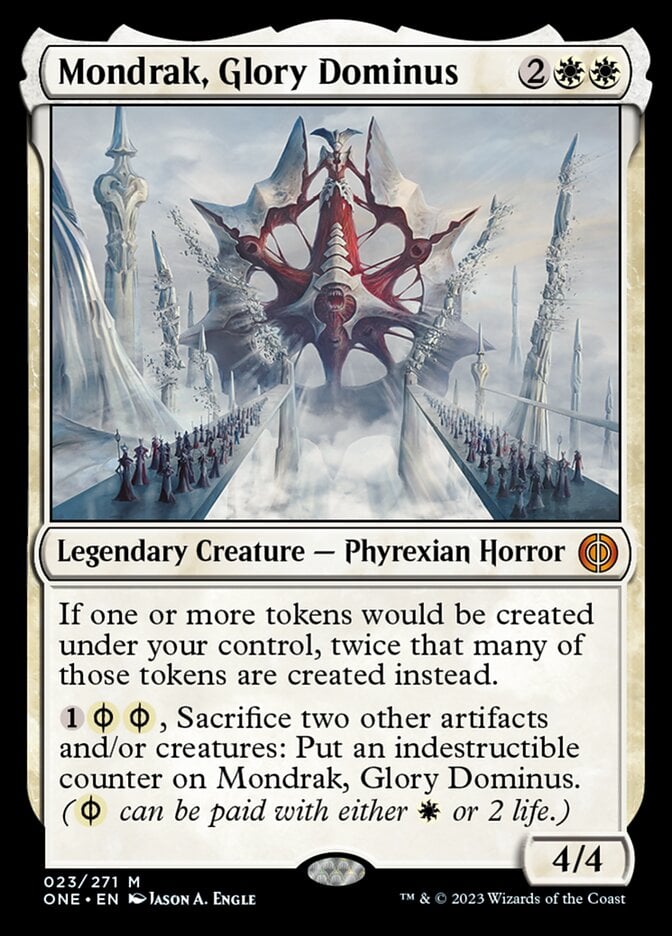
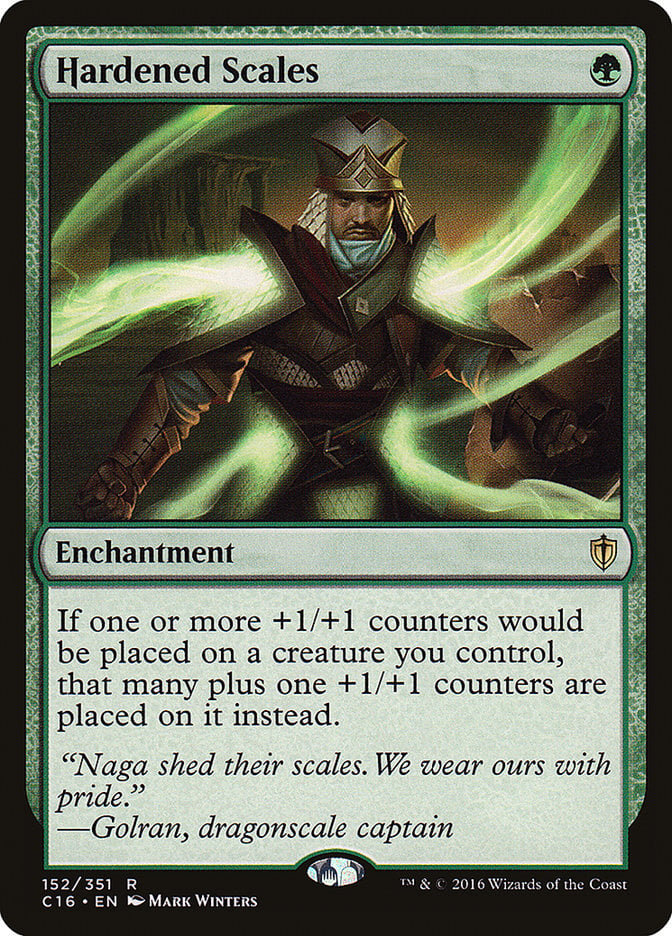
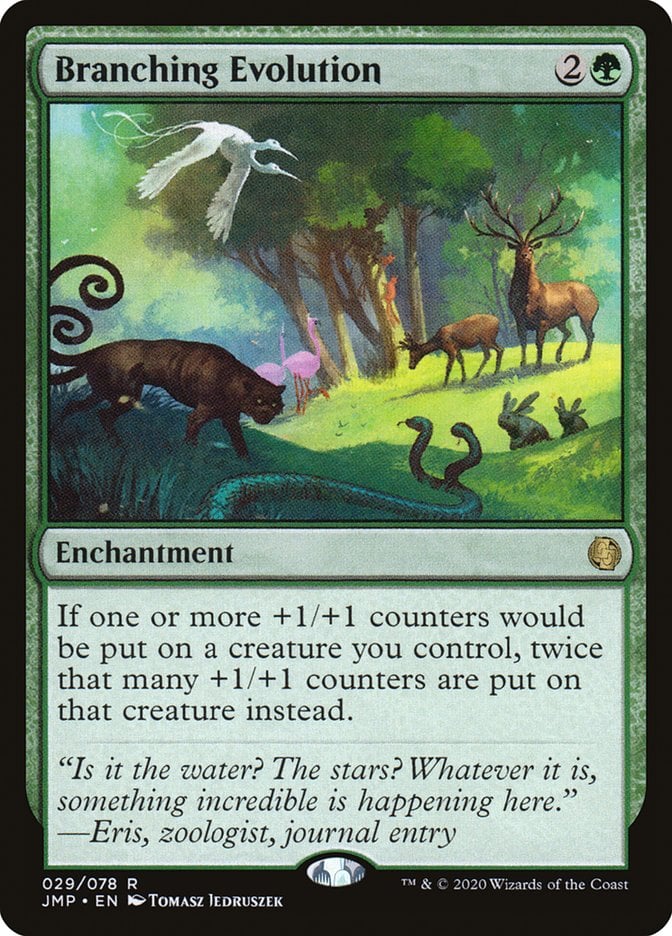
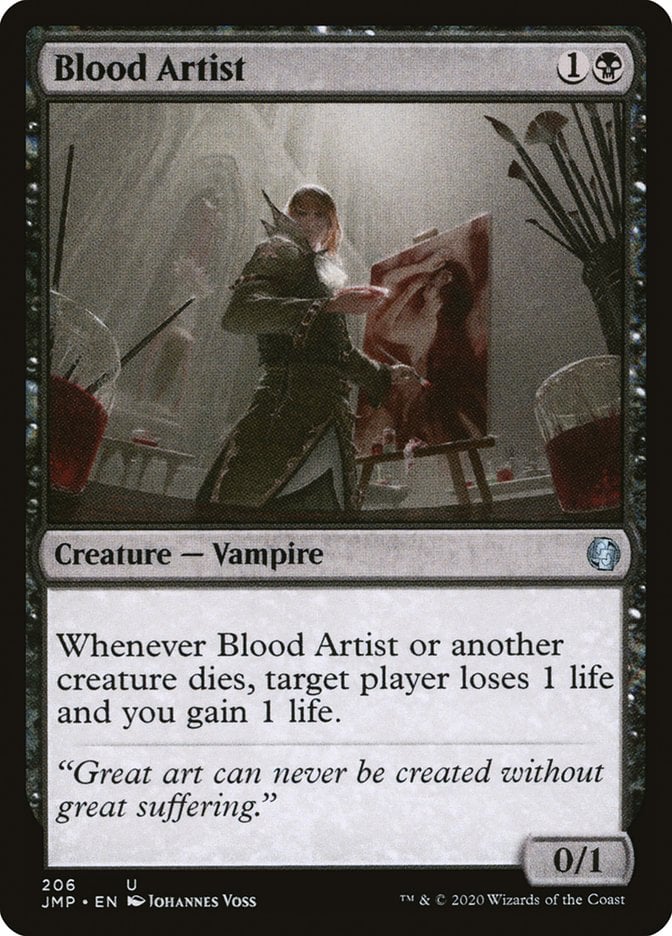


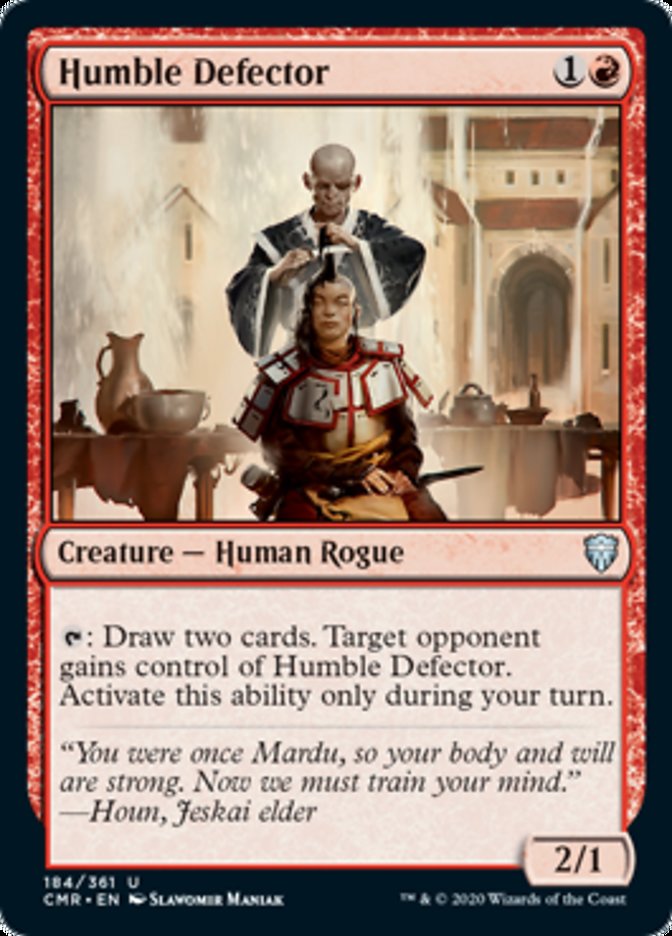

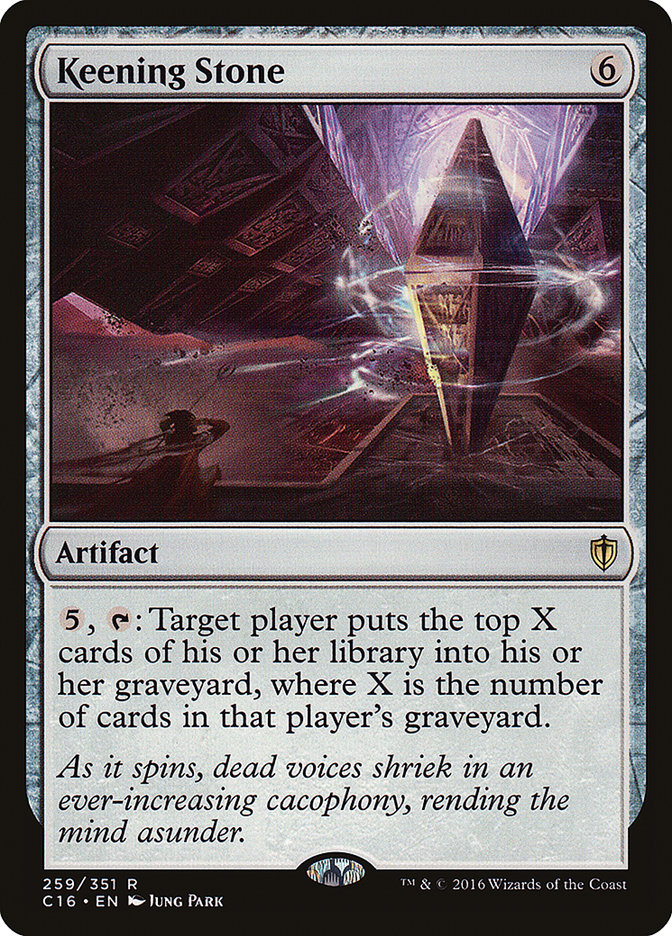




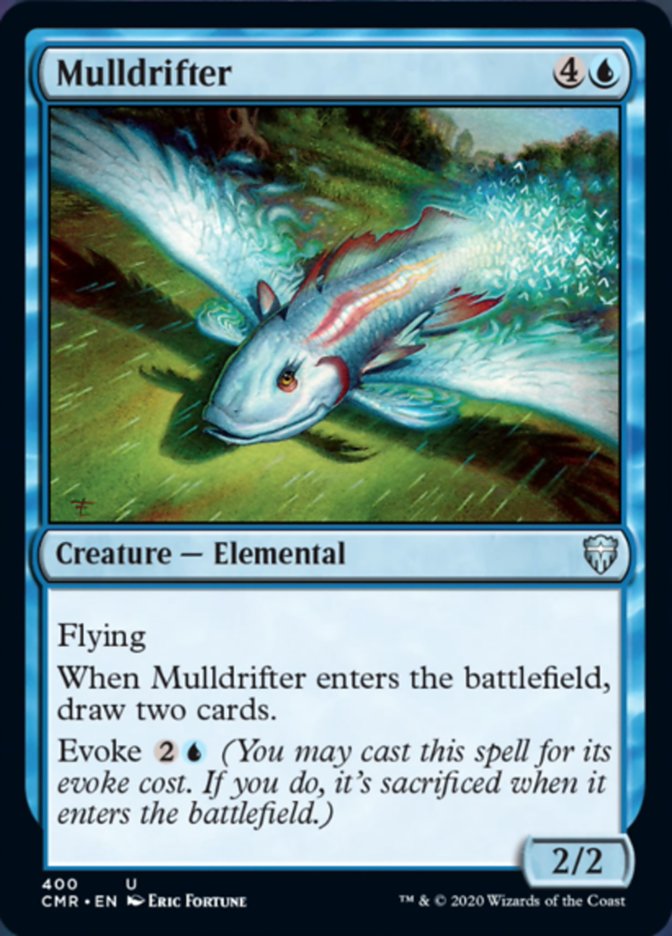
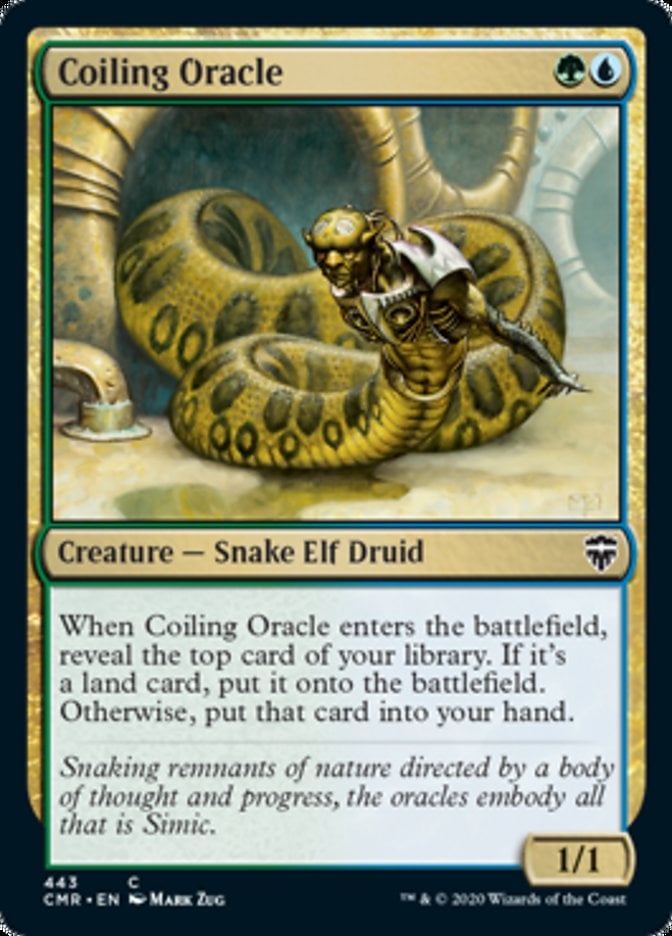
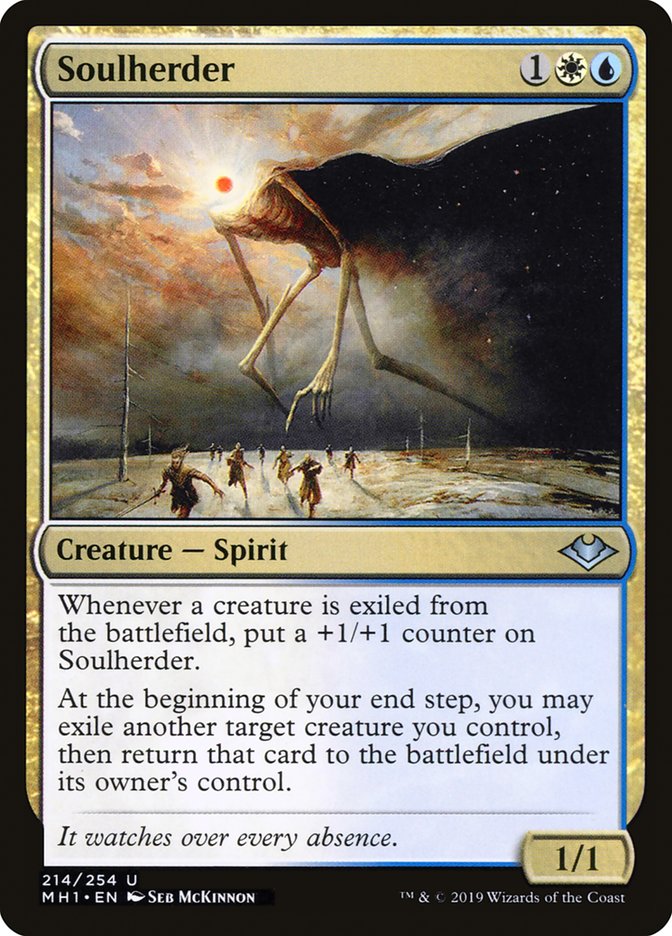
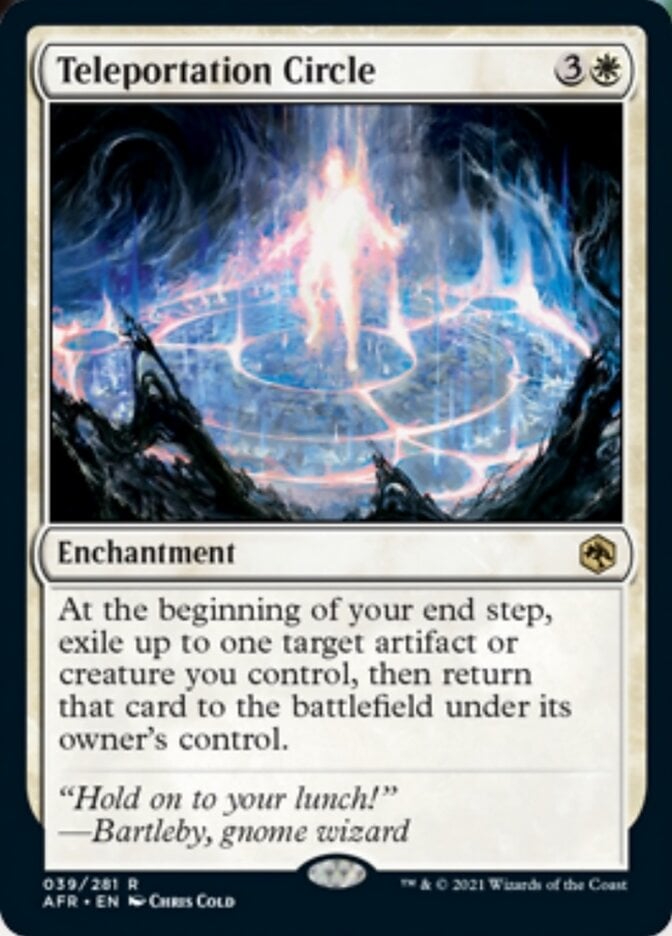
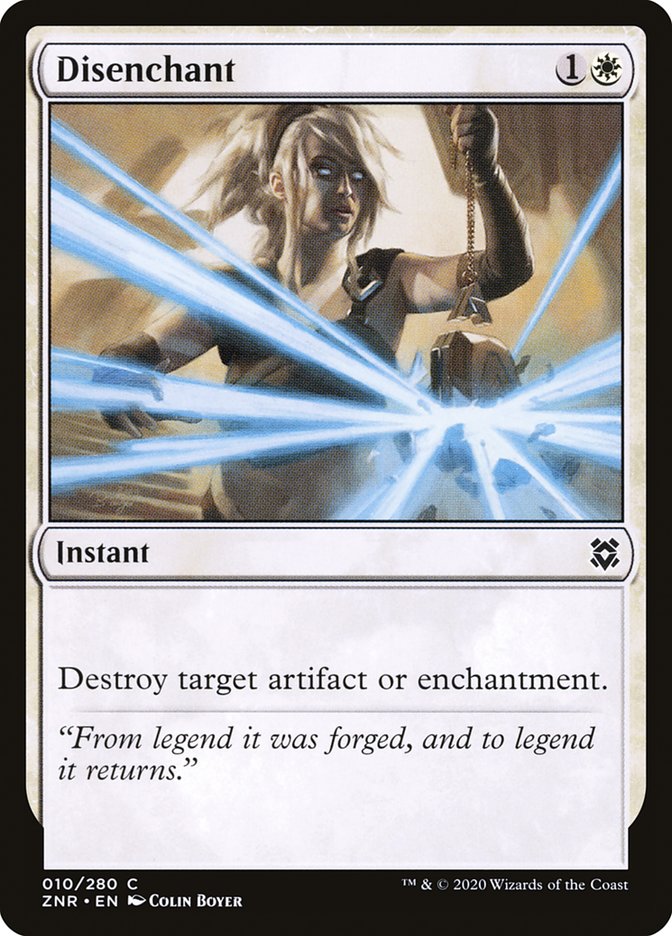

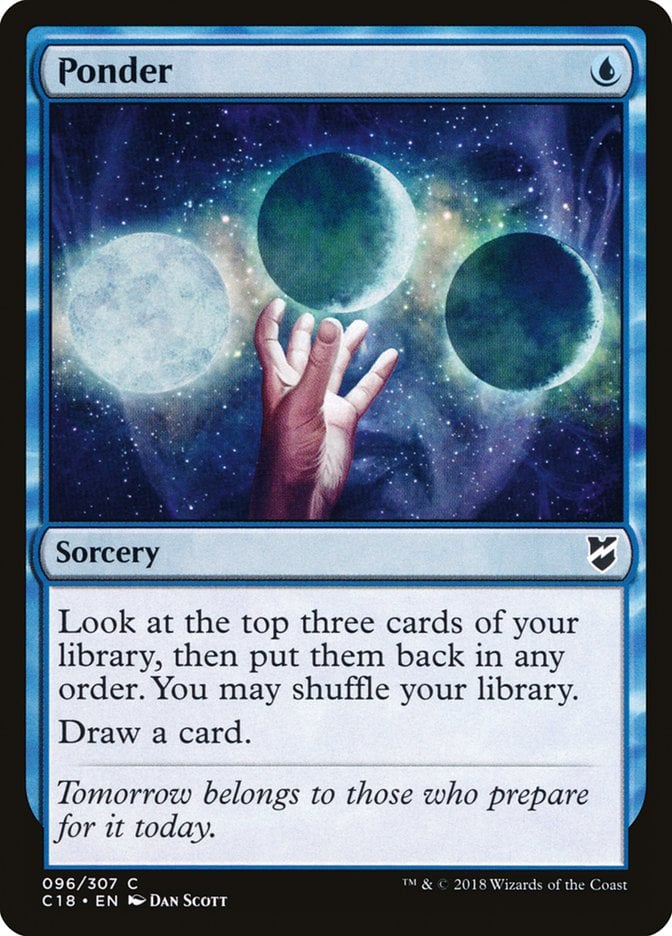
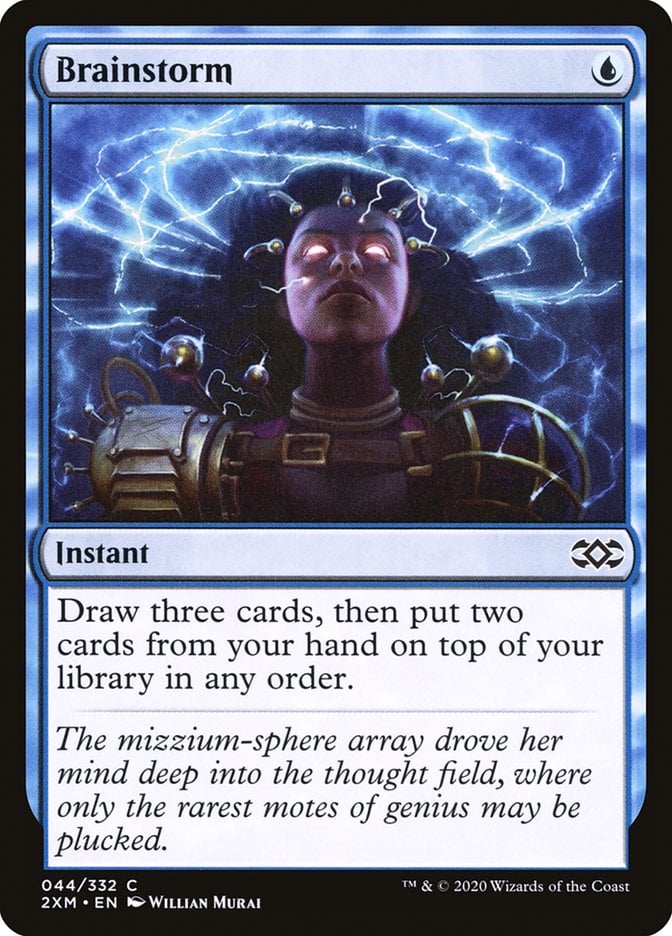
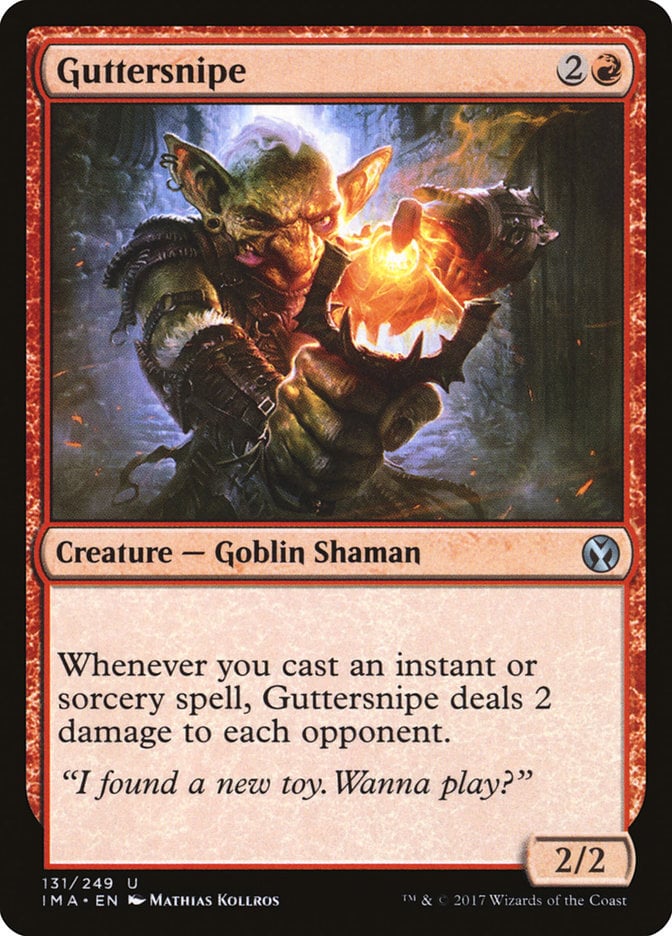
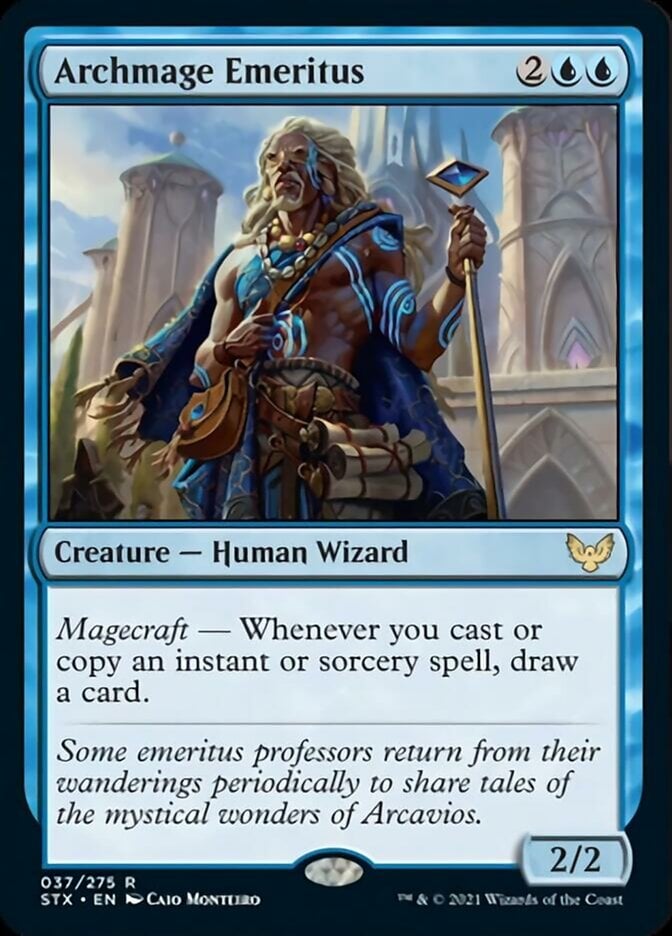
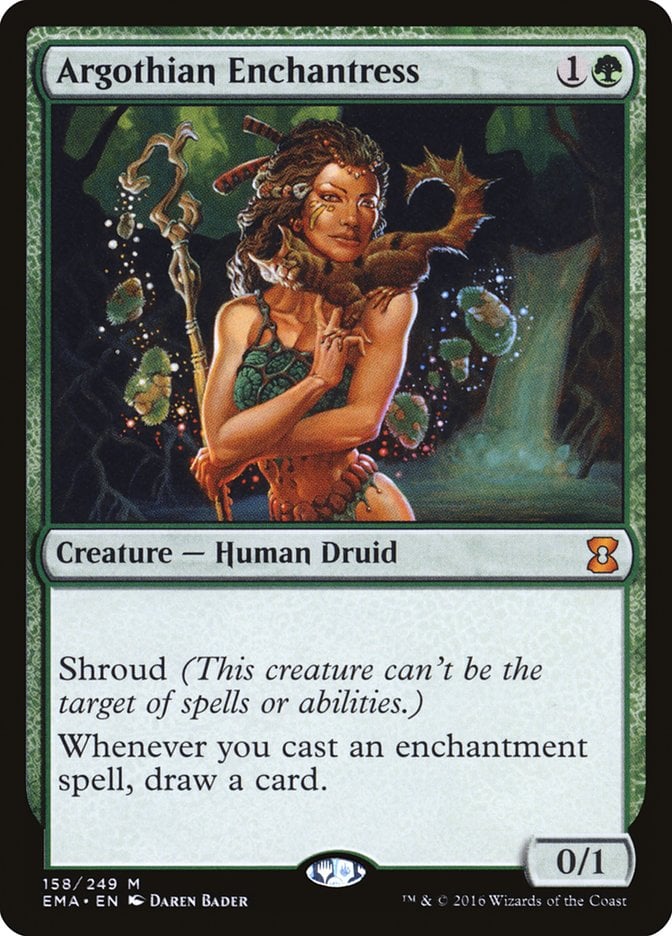
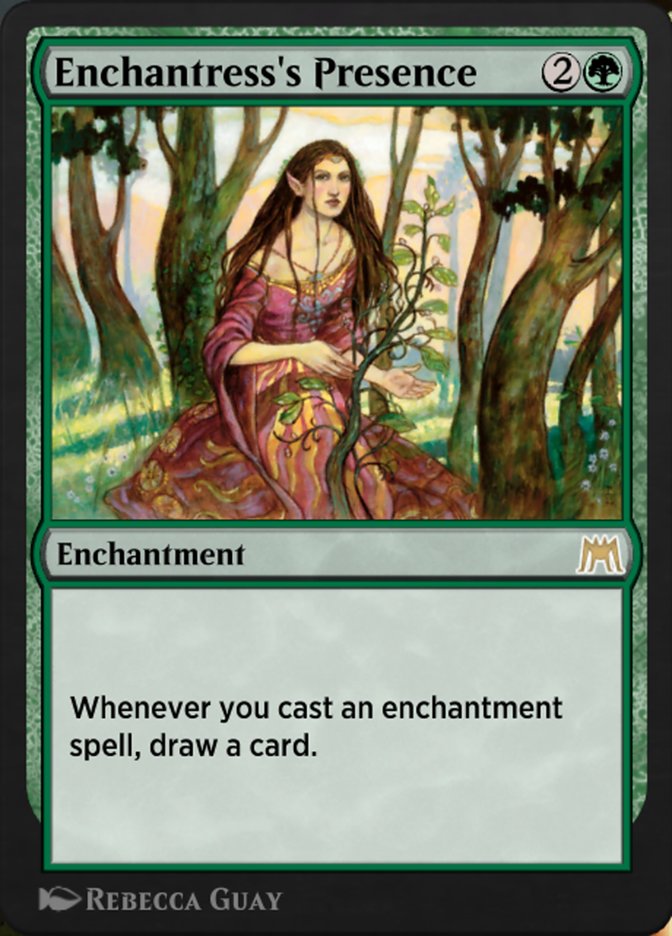
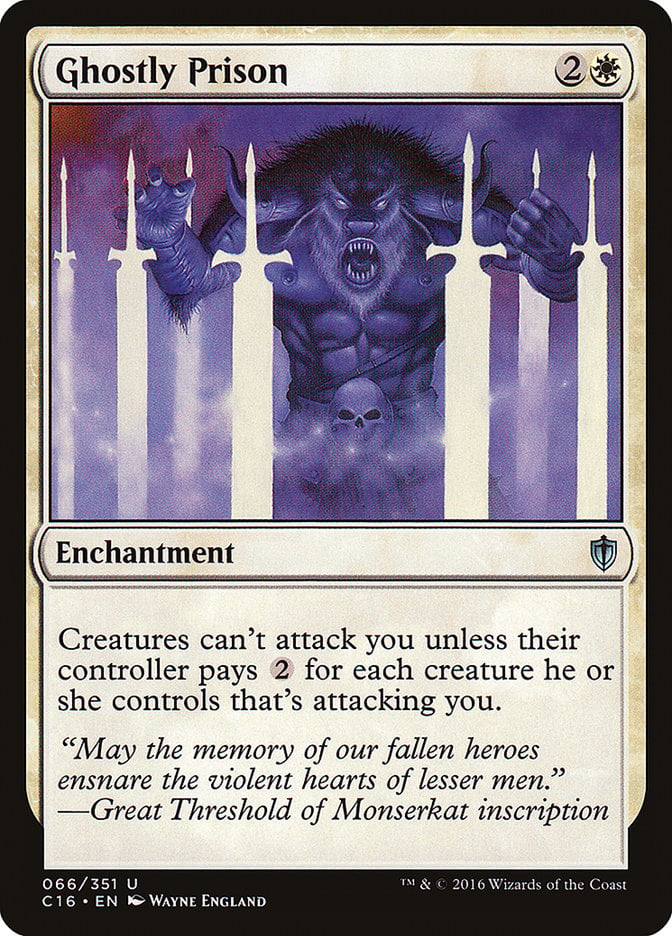
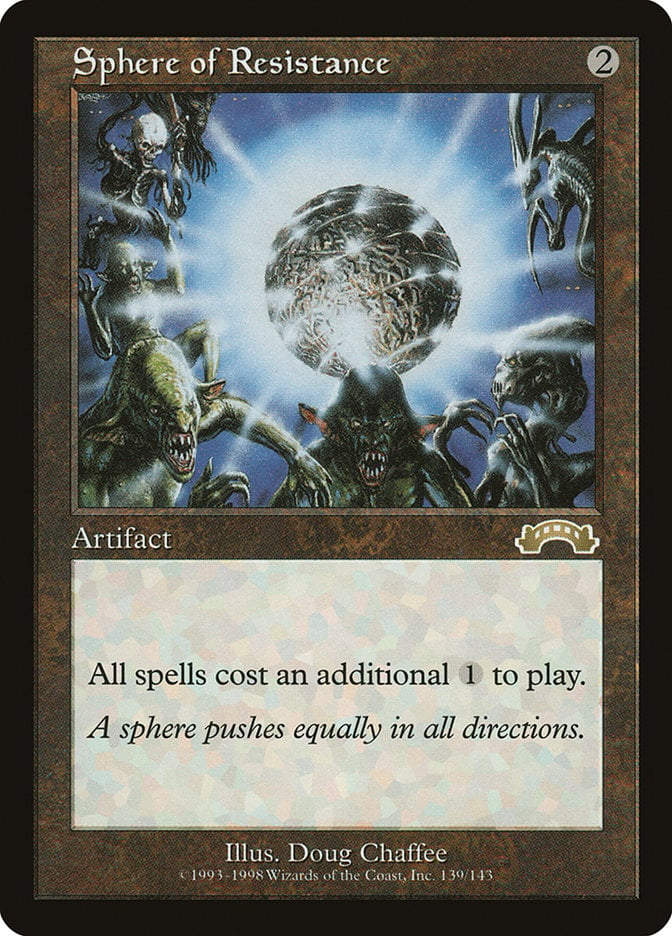

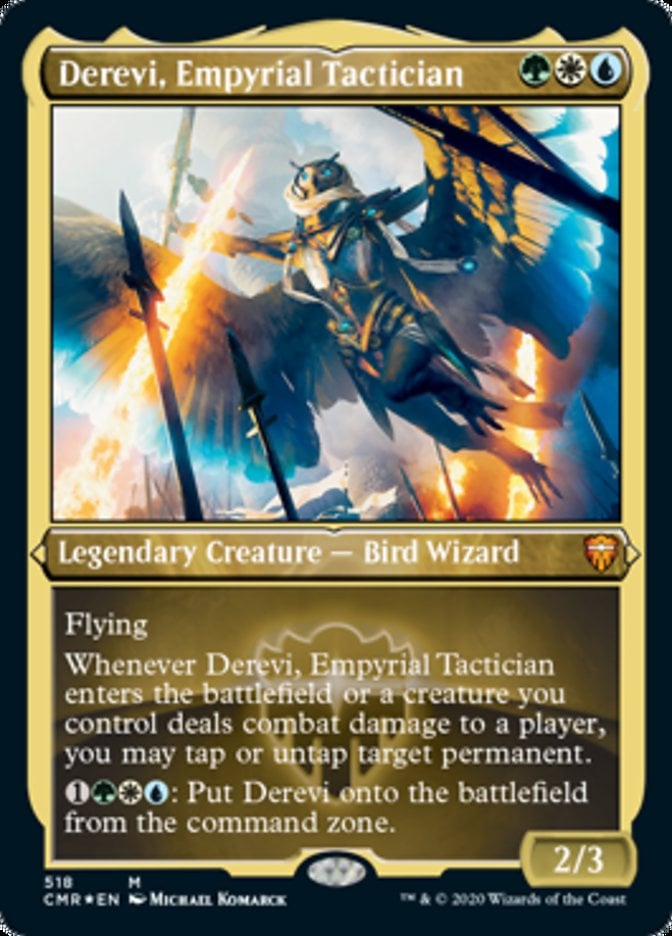
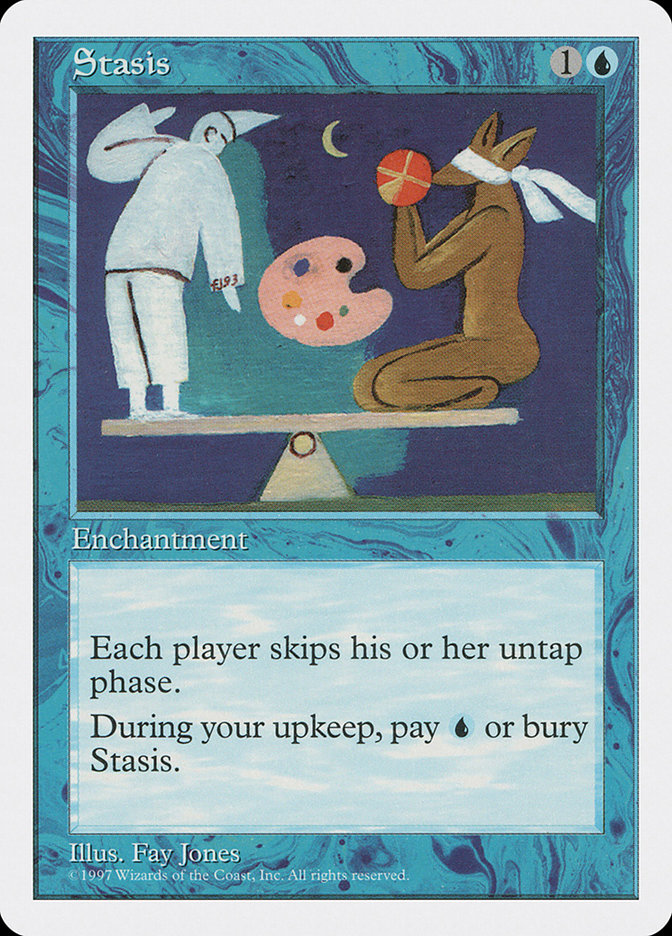

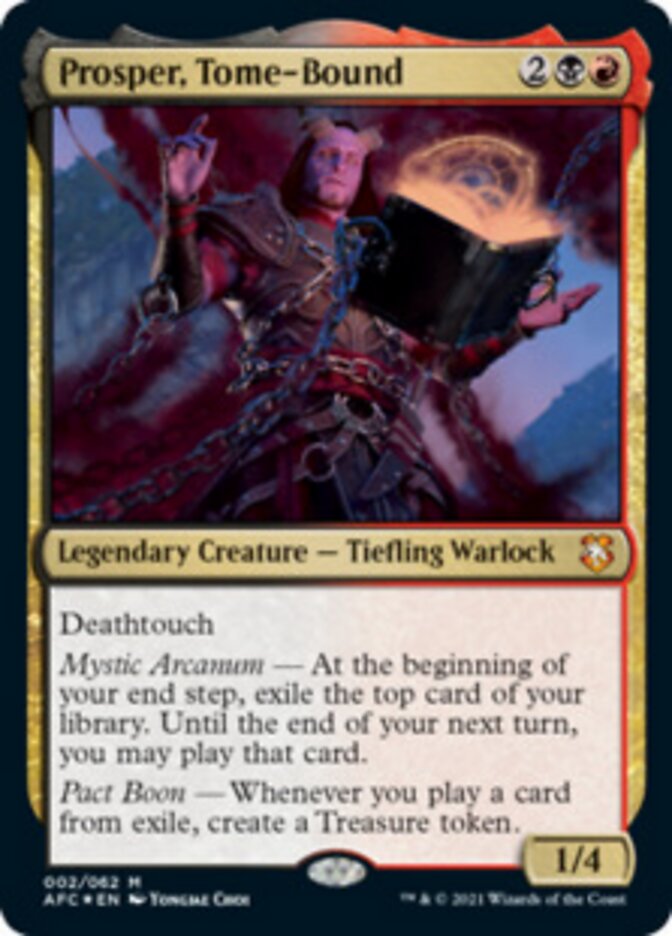
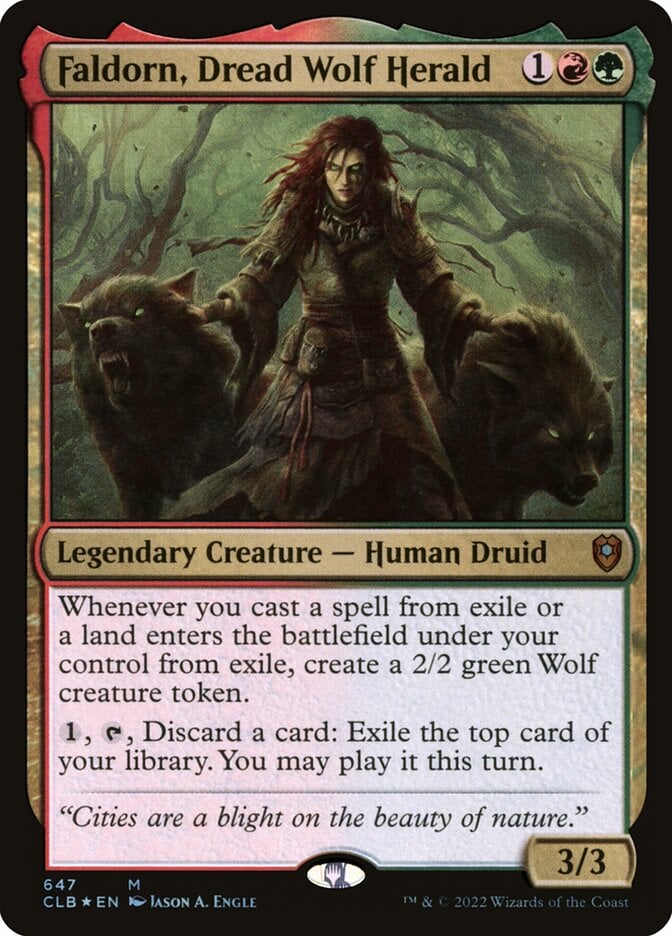
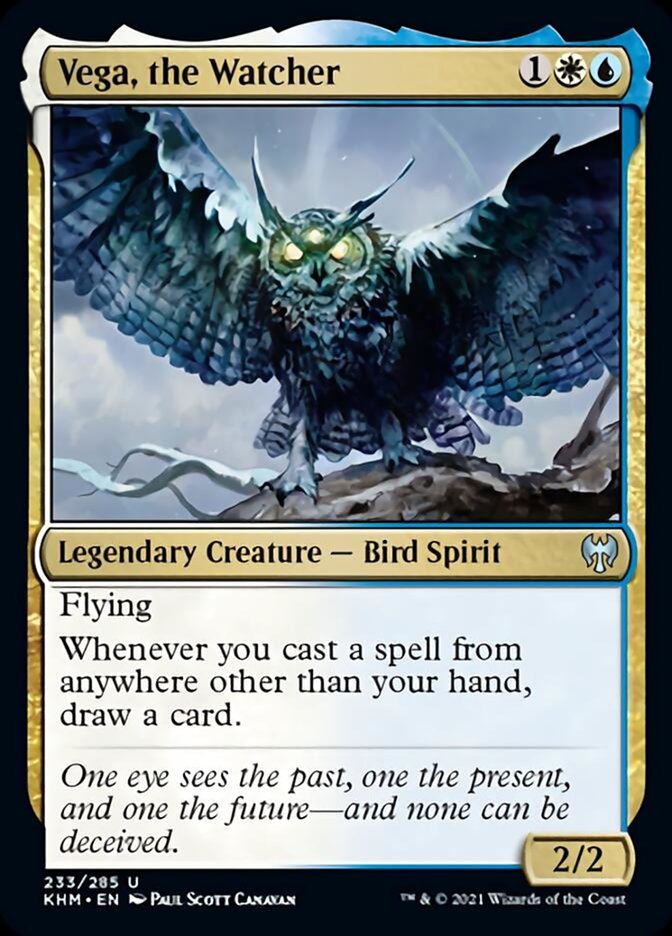
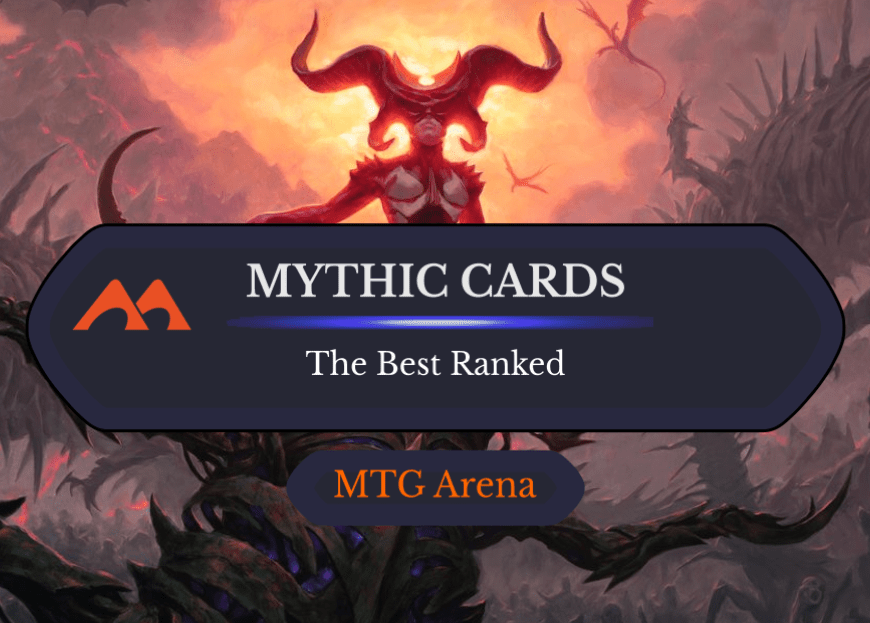
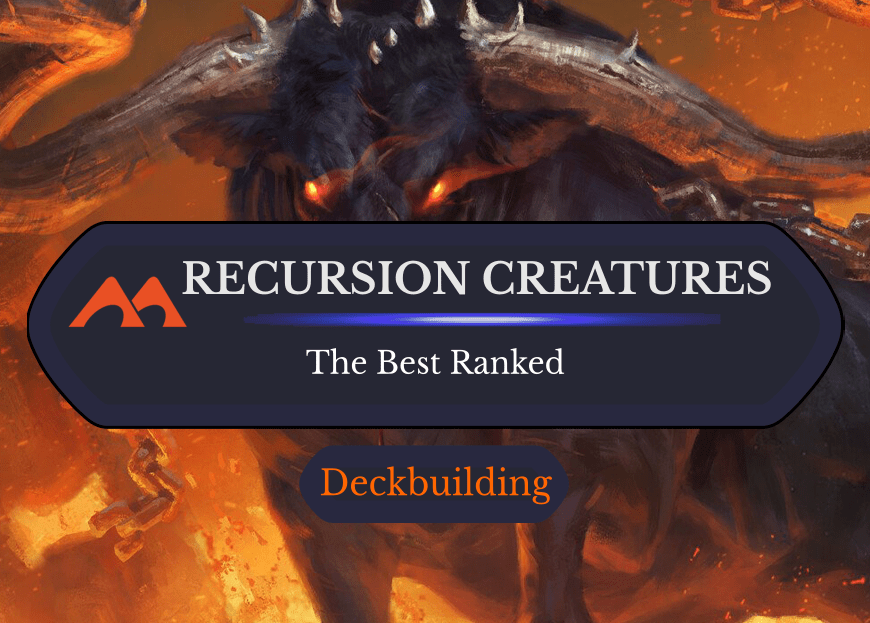
Add Comment